BULLthe





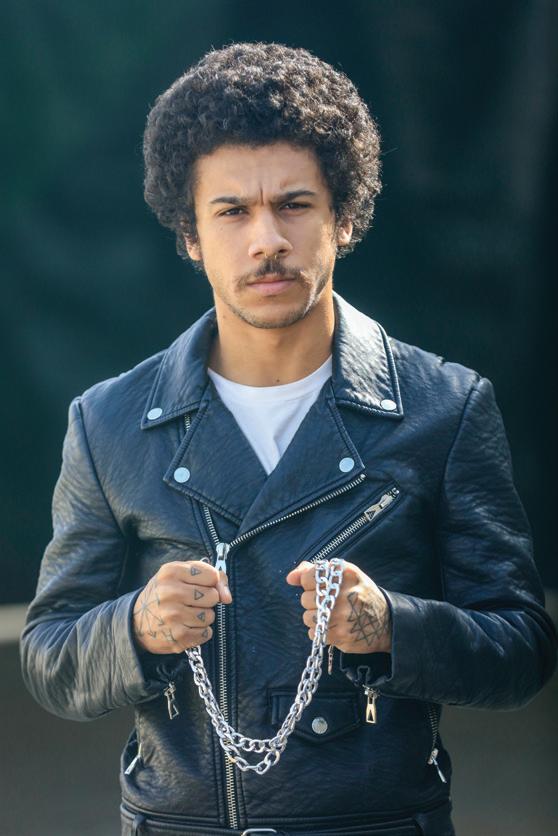
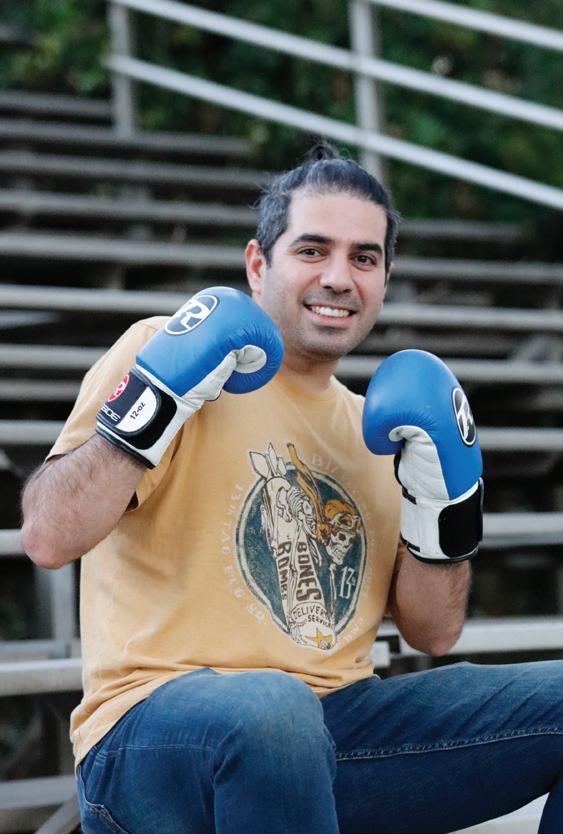
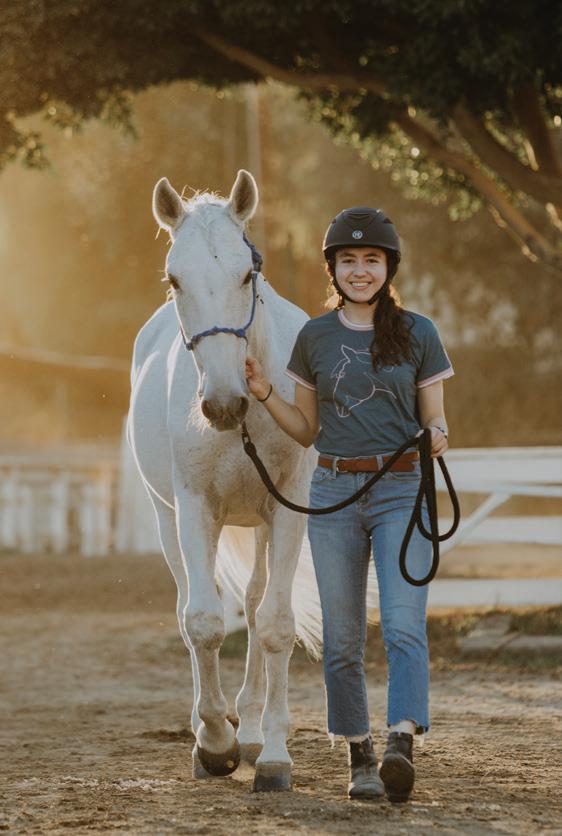
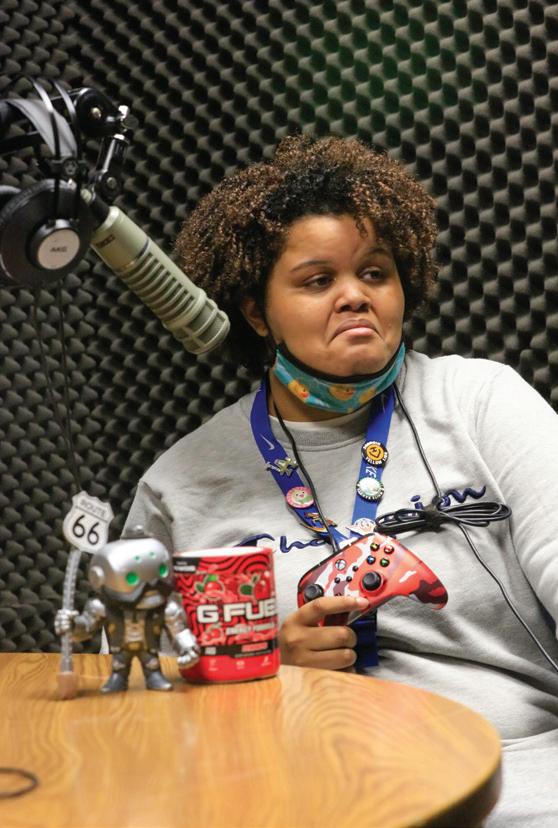
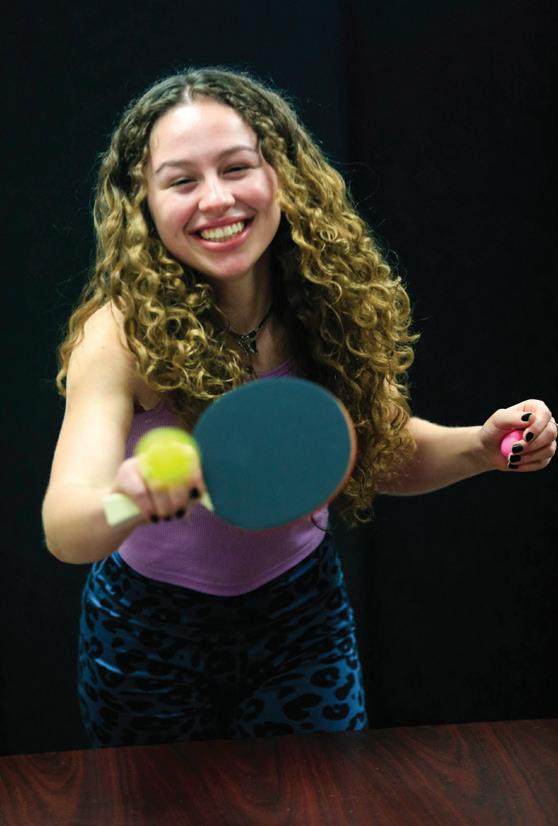
 Madeleine Christian Reporter
Madison Creekbaum Reporter
Dalaanii Cochrane Reporter Raquel G. Frohlich Reporter, Photographer
David Pashaee Reporter, Photographer
Brandon Sinclair Reporter, Photographer
Bala Subramaniyan Managing Editor
Benjamin Hanson Editor-in-Chief
Jill Connelly & Jeff Favre Advisers
Bailey Payne performs a J-step flip on the CSUN Library steps on Oct. 8, 2021.
Front cover by Benjamin Hanson.
Rusty (front) and Faith ride on a surfboard in the “Surf City Surf Dog” event in Huntington Beach on Sept. 25, 2021.
Back cover by Raquel G. Frohlich.
Madeleine Christian Reporter
Madison Creekbaum Reporter
Dalaanii Cochrane Reporter Raquel G. Frohlich Reporter, Photographer
David Pashaee Reporter, Photographer
Brandon Sinclair Reporter, Photographer
Bala Subramaniyan Managing Editor
Benjamin Hanson Editor-in-Chief
Jill Connelly & Jeff Favre Advisers
Bailey Payne performs a J-step flip on the CSUN Library steps on Oct. 8, 2021.
Front cover by Benjamin Hanson.
Rusty (front) and Faith ride on a surfboard in the “Surf City Surf Dog” event in Huntington Beach on Sept. 25, 2021.
Back cover by Raquel G. Frohlich.

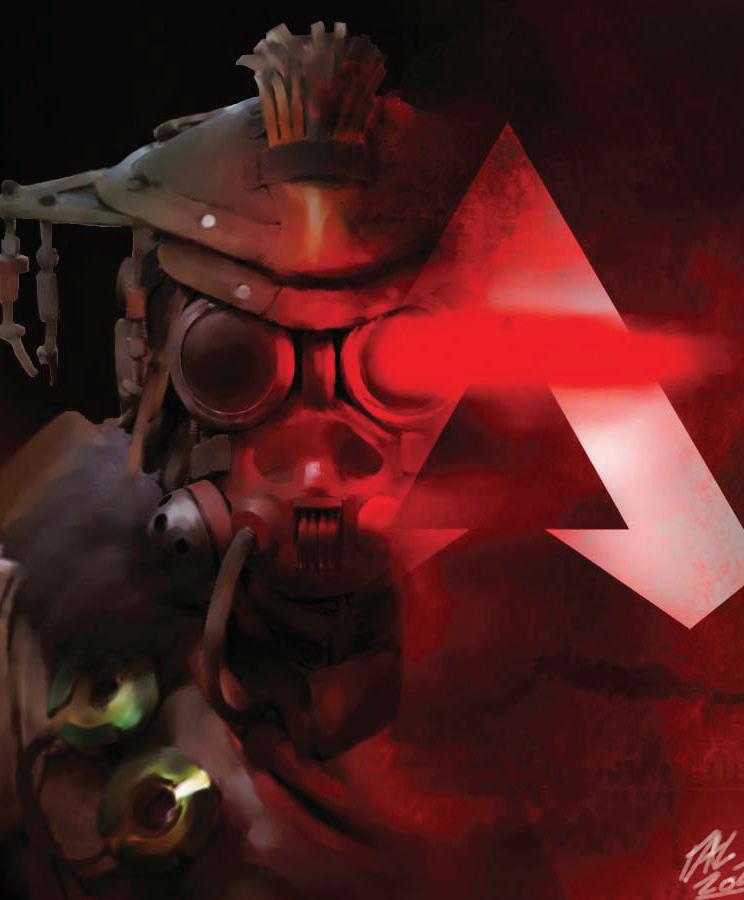
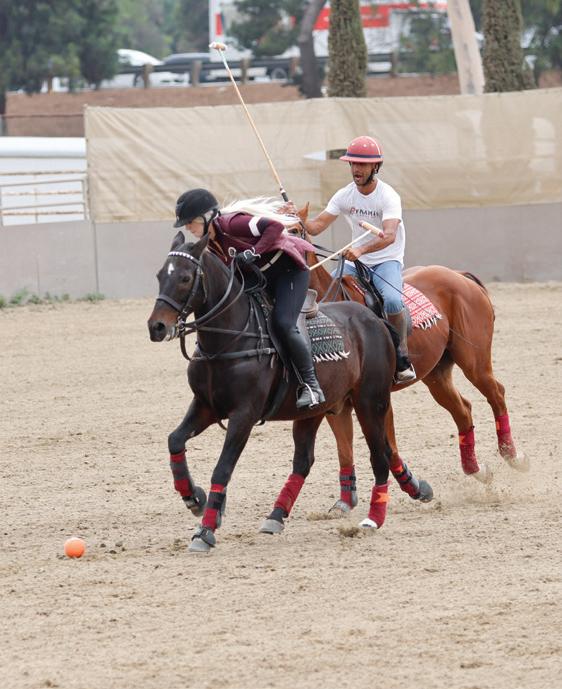
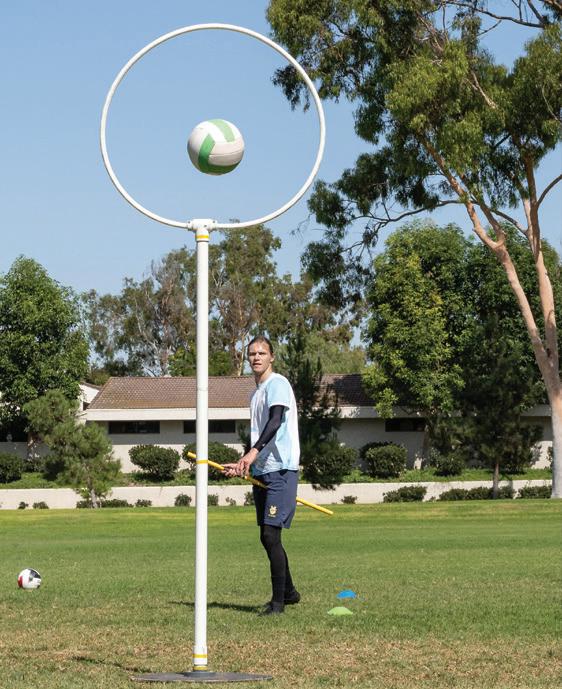

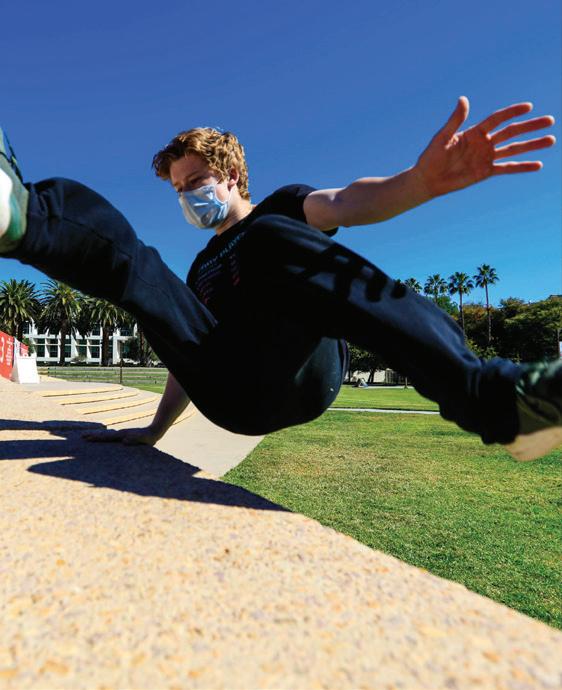


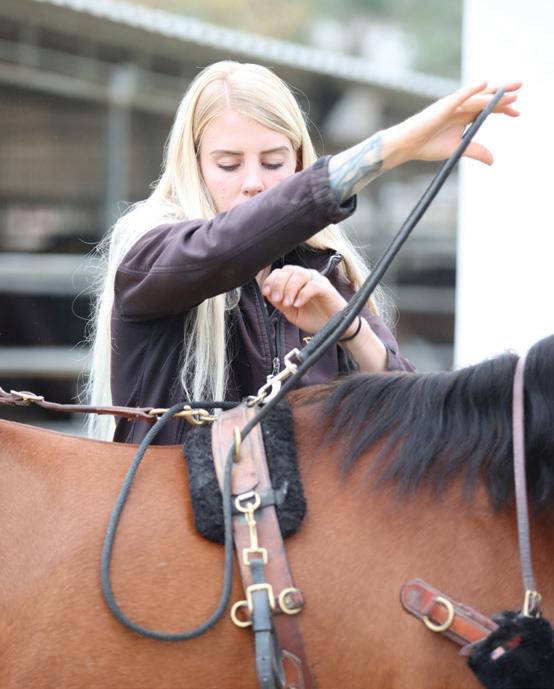
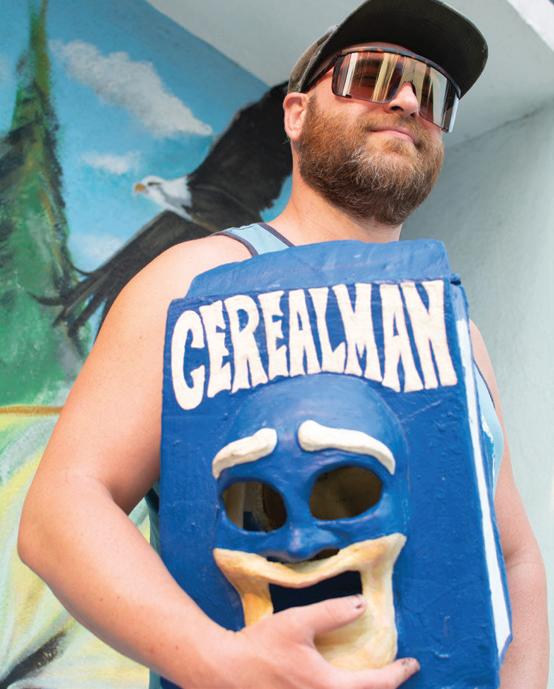
Quidditch is familiar to most as a broom-flying, cape-wearing game of dodgeball, but the league sport played by muggles is a little less known than its magical counterpart.
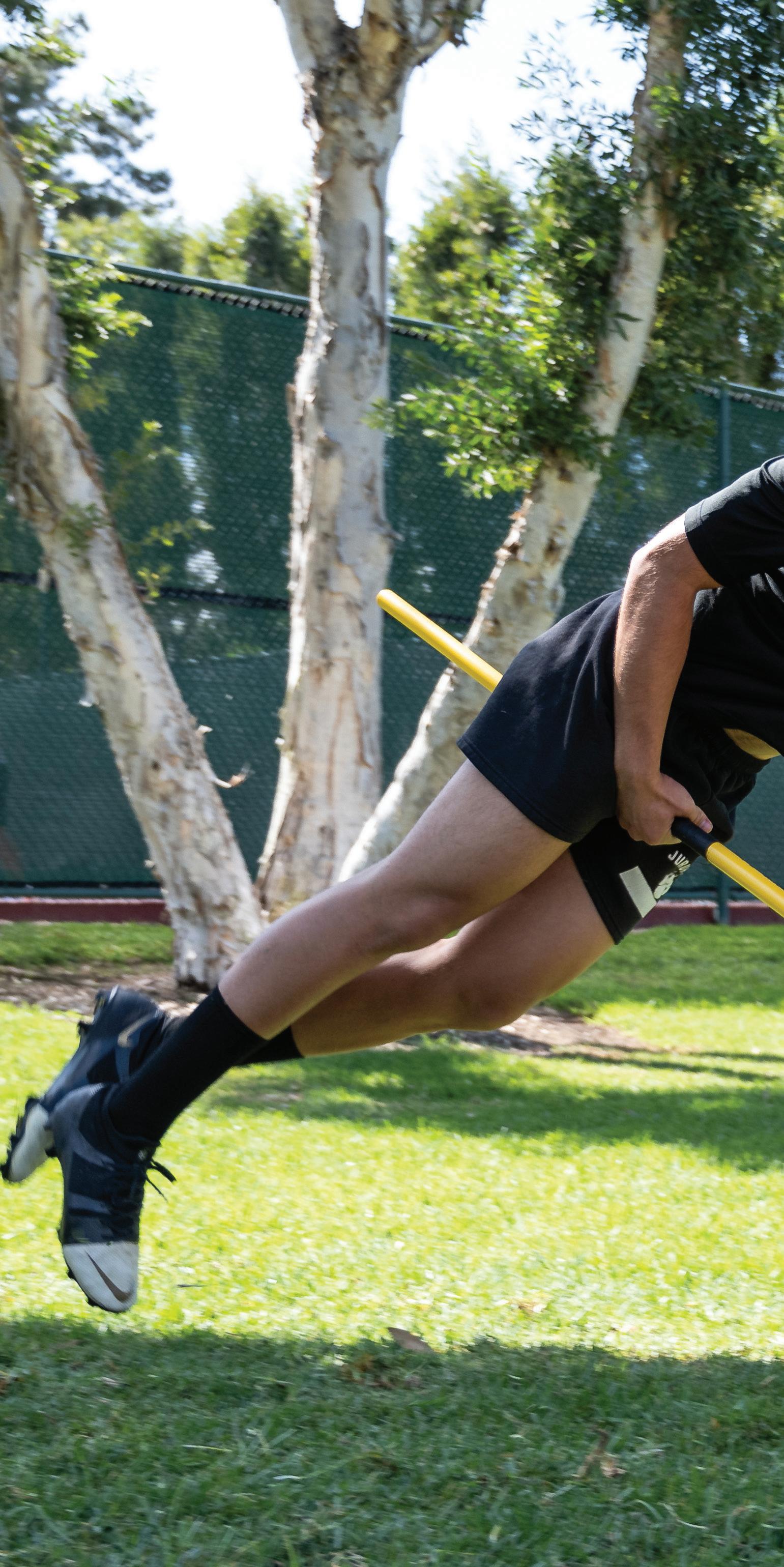
It comes from J.K. Rowling’s Harry Potter series though, there is nothing fictitious about this real-life recreation.
Both versions are ball-based games, but the real-world adaptation has had to adjust to the rules for obvious reasons.
Adaptations vary in action, but almost all of them focus on the sport rather than the fiction. This is not a role-playing game. It bears a close likeness to an intramural sports league, though not for the faint of heart.

Quidditch requires little knowledge of the wizarding world to understand a game though an appreciation for its namesake summons many of its players.
If you don’t know anything about the sport, it’s nearly impossible to follow a game.
There are six players on the field in the first half and after a short break, there are seven. Scoring takes place by throwing one of the game balls, or quaffles, into one of three vertical hoops of your opposing team. These scoring players are called chasers.
While trying to score, players called beaters use semi-deflated dodgeballs, or bludgers, to hit the chaser with the quaffle.
If you are hit with a bludger, you have to drop the quaffle, run back to your home hoops and tag them to re-enter the game.
The keeper is the goalie who protects their home hoops from opposing chasers.
It’s a lot to digest and The Lost Boys Quidditch Club team captain, Ryan Smythe, gets it.

“We are a competitive sports team,” Smythe said. “It’s full contact. We usually compare it to a combination of rugby and dodgeball.”
Not all Potter-heads know quidditch, including Pierce College’s resident Harry Potter expert Mickey Harrison.
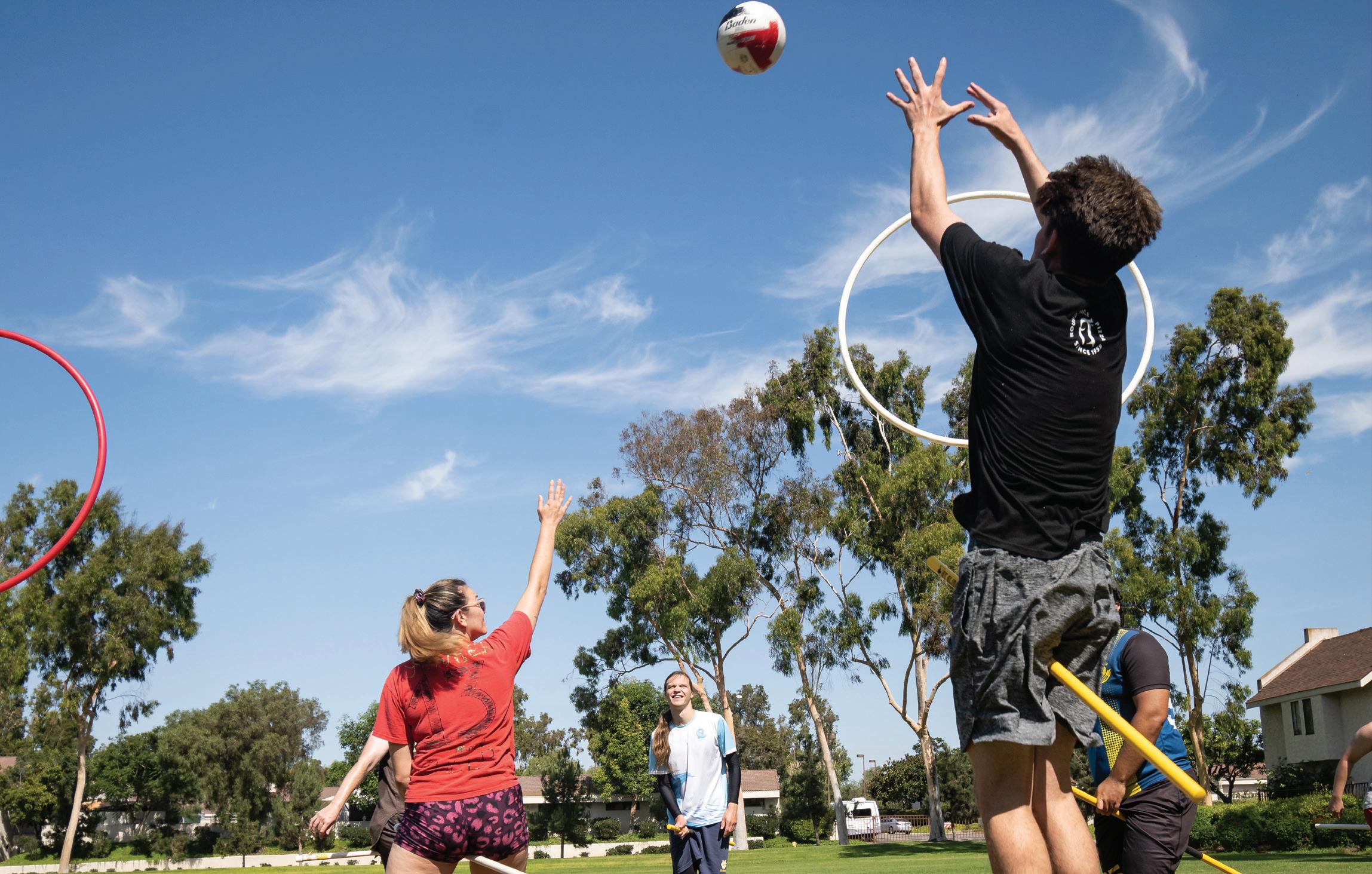
“It would seem like a difficult game to appreciate if an individual did not have any experience with the Harry Potter world,” Harrison said. “I have only heard of leagues and events, but I have never actually attended a contest in person.”
The human adaptation was first brought to life in 2005 by two students from Middlebury College in Vermont and now has an international governing body. This body has published several up-to-date rule books available in multiple languages.
In more recent years, the sport has made inclusion and equality a priority within its leagues. Rules are in place to protect gender discrimination and to expand inclusion to non-binary and LGBTQ+ players.
One of these rules, known in the quidditch world as Title 9 ¾, states that “a team may not have more than four players who identify as the same gender in play.”
Anteaters Forever player Amanda Bortner thinks the rule brings more balance to the field.

“It makes the sport more inclusive,” Bortner said. “Like I’m part of the team.”
Quidditch leagues have been working hard to separate themselves from the Potter franchise, and this new emphasis on making the sport a place for all players has put them at odds with the creator of the Harry Potter universe.
Controversy has shrouded
Rowling’s name in the last five years. Accusations of homophobia and transphobia caused a stir for the author after she liked a tweet calling
Now, the sport has taken on a life of its own and no longer needs the support of its originator to prosper. UCLA and UC Berkeley are some of the more notable universities to have an official quidditch team. International teams have popped up across Europe, Mexico, and Australia, Uganda, Malaysia and Vietnam.
Quidditch is still considered a niche sport and presumably will be for the foreseeable future, but it is a sport nonetheless.
trans women “men in dresses.” Fans quickly began to disassociate themselves from Rowling, and she was labeled a TERF or trans-exclusionary radical feminist, which included ardent critic Smythe, whose criticism he summed with, “Fuck J.K. Rowling.”
Lost Boys Quidditch regularly holds open practices for anyone who wants to attend. Information on practices can be found through their Facebook page, The Lost Boys Quidditch Club.
“If you’re on the fence, check out some games or highlight reels on YouTube,” Smythe said. “Shoot a message to a team you’re looking at practicing with, I can guarantee they’ll be ecstatic to hear from you.”
“
We usually compare it to a combination of rugby and dodgeball.
Ryan Smythe Team captainPlayers from the Quidditch team Anteaters Forever prepare to start a game at Gramercy Park in Los Angeles, on Oct. 23, 2021. From left to right, Jacob Ellis, Timothy Connor, Tyler Hodges, Kobe Kendall, Roxanne Pena and Stephanie Lutz.
 Story and
Ernie Ezcurra (left), of HYT Polo, and Sean Goel (right), of Fair Hills Farms, gallop across the field during the Will Rogers Memorial Tournament Championship Match at the Will Rogers Polo Club in Pacific Palisades, Calif., on Sept, 26, 2021.
Story and
Ernie Ezcurra (left), of HYT Polo, and Sean Goel (right), of Fair Hills Farms, gallop across the field during the Will Rogers Memorial Tournament Championship Match at the Will Rogers Polo Club in Pacific Palisades, Calif., on Sept, 26, 2021.
Hoofbeats pounding in their ears, snorting breaths from the horses as they gallop over the field with their riders, metal bridle pieces jingling with every stride.
And there is Ernie Ezcurra, leaning over the saddle just three feet away from the ground, polo mallet poised in the air, ready to send the little white ball hurtling across the fiewld.
Players are ranked on a scale of -2 to 10, and with a 3-goal handicap, he is the highest ranked player on the field at the Will Rogers Memorial Tournament Championship Match at the Will Rogers Polo Club in Pacific Palisades.
“What characteristics make a great polo player? Somebody that is smart, fearless and most of all, a great rider,” Ezcurra said.
Originally studying and working in Argentina to be a journalist, Ezcurra was offered a job working with green horses and came to the realization that horses were the only way to go.
Club pro, certified polo instructor, barn manager—Ezcurra wears many hats. Elise Markell, Ezcurra’s partner and an amateur polo player who works in the entertainment industry, talked about his role at HYT Polo.
“He does anything that’s asked of him,” Markell said. “Honestly, no job is too small for him. We’re a small organization, and he trains the horses, he deals with clients, teaches the lessons, he plays.”
Paige Baker, a dressage trainer
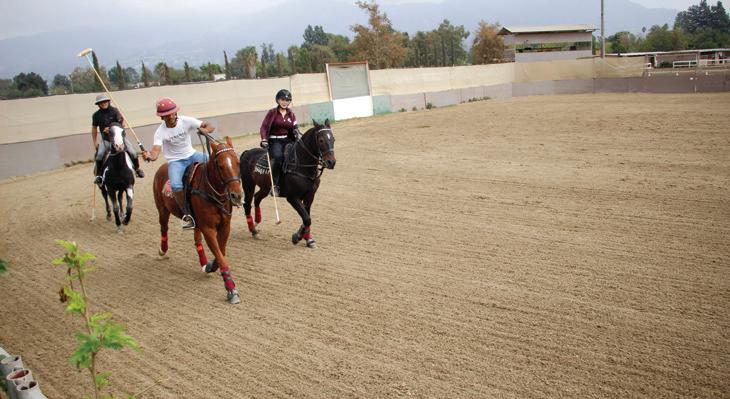
based in Los Angeles, recently began taking polo lessons with Ezcurra and has enjoyed her time learning with the polo ponies.
“When I was taking that private lesson, at first we were just practicing hitting the ball, and then we decided to do a little scrimmage, and as soon as we picked up the pace, and really got in the game, that horse got amped up and he was ready to go,” Baker said. “He was like, ‘This is what I’m going for. I know what my job is, like, let me have at it.’ So, they have fun with it too.”
Some of Ezcurra’s favorite memories of the sport involve his brothers.
In 2007, with his brother Julio, also a professional polo player, he competed at Mashomack Polo Club in Pine Plains, N.Y., and were undefeated in the 8-goal tournaments.
“It’s like a special bond when you play with your brothers,” Ezcurra said. “It’s like you give it all for each other.
At what level players compete depends on the amount of money they want to spend, rather than only on talent or hard work.
George J. DuPont Jr., the executive director of the Museum of Polo and Hall of Fame, talks about the high price of playing polo.
“It’s always been an expensive sport to play based on the horseflesh and the maintenance of the horse and the maintenance of the fields,” DuPont said. “Anybody can play this sport,
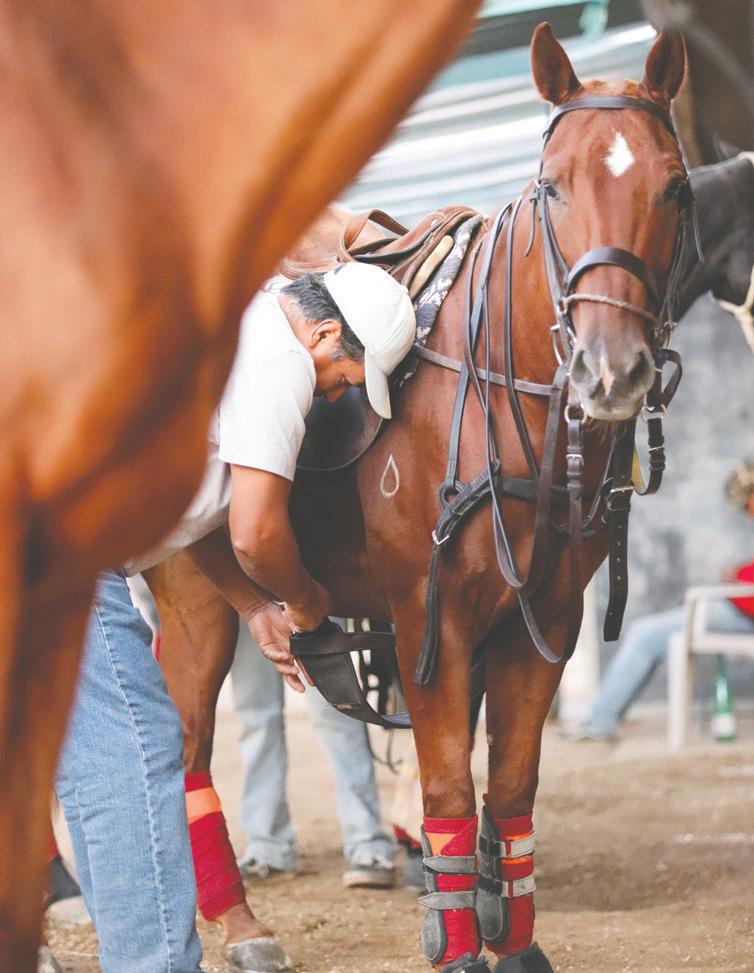
but you would need to dedicate your entire life to maintaining the horses.”
Riders new to polo typically start at the coaching league level. They can then move up to the pro pool, which consists of three lower level amateurs and one pro. The pro’s job is to assist the amateurs on the team.

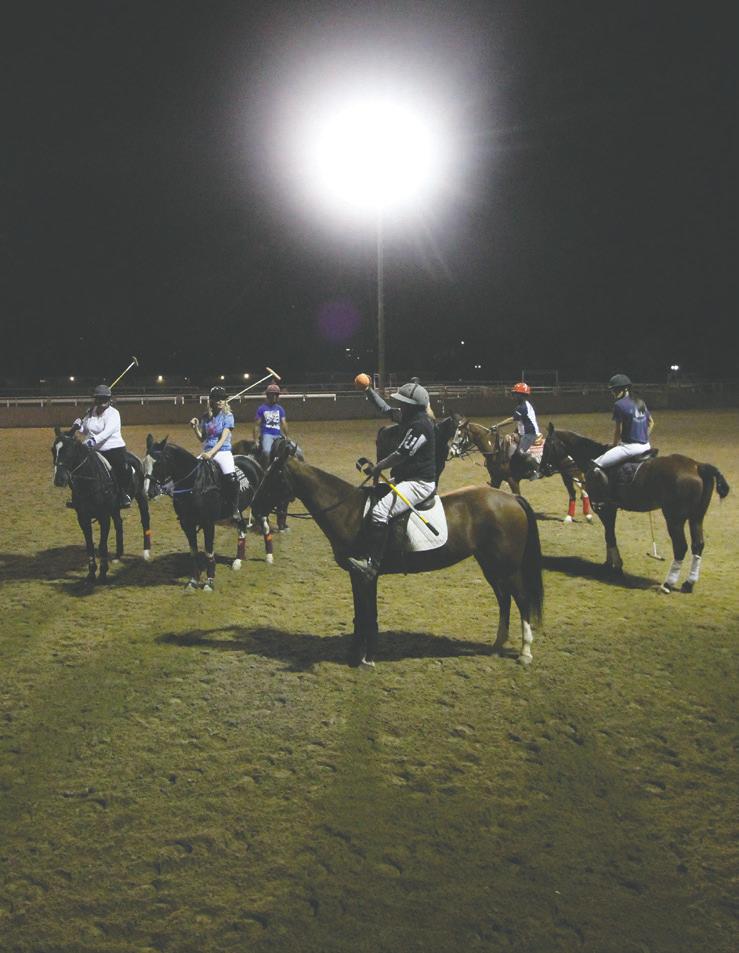
Instead of scoring goals or winning the game on their own, the pro’s job is to pass the ball to their students and help them learn how to make plays and gain field awareness. These are more affordable levels of playing.
Markell talked about the advantage of having a coach like Ezcurra.
“If you play with a pro like Ernie, it’s amazing, because he is a great teacher and he really spends the time to talk to you on the field and tell you where you need to be, and in between chukkers he’ll give you tips.”
In spite of all the hardships and challenges that go into playing polo, players must embrace every aspect of the sport if they want to play the game.
Markell is one of many polo players who appreciate the lifestyle they live because of the sport.
“I love the game,” she said. “I love the horses. I love everything that goes into it. I love that every day of my life is consumed by polo, even though it’s not what I do for my job. I work in the entertainment industry and I do that so that I can afford to play a little bit of polo.”
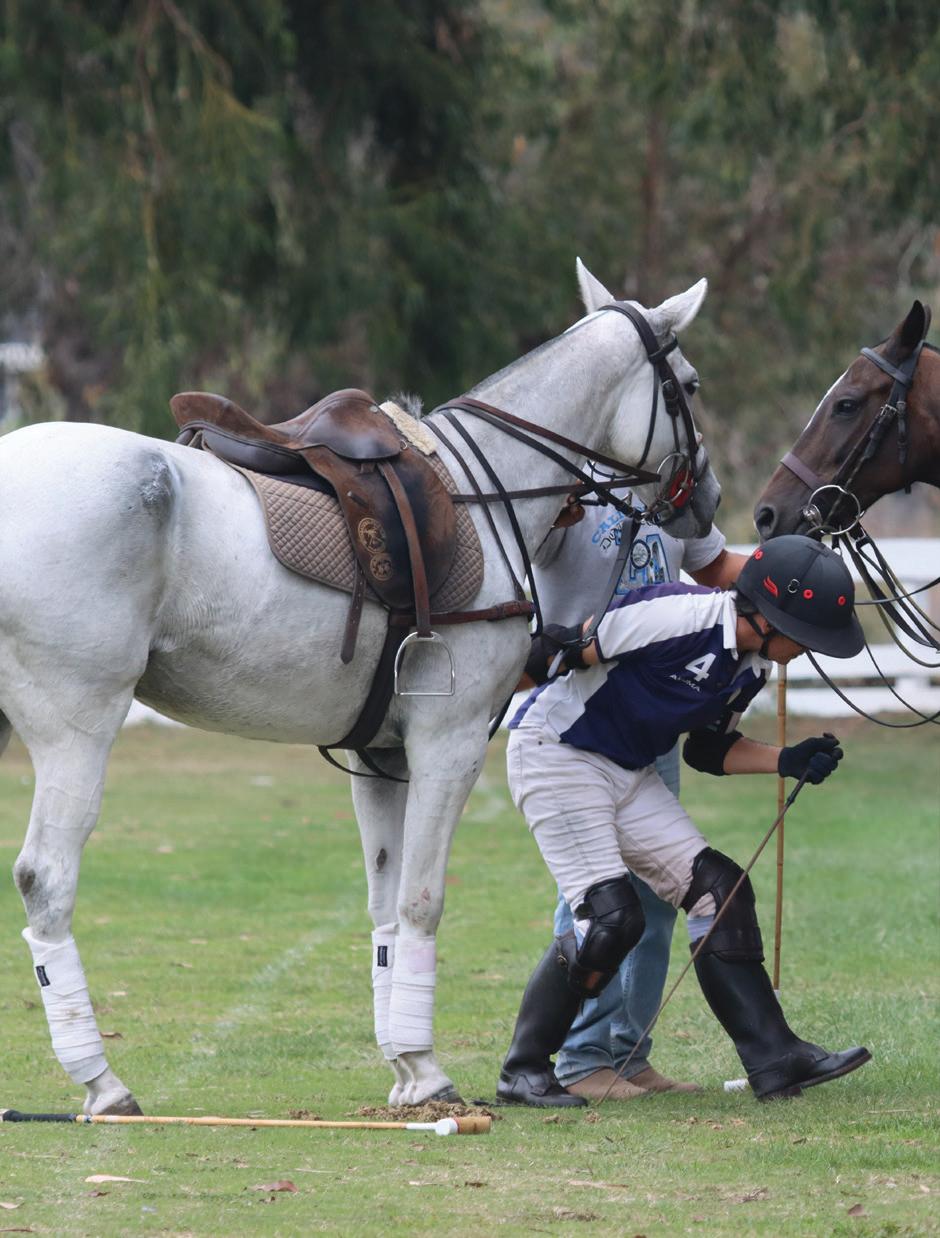
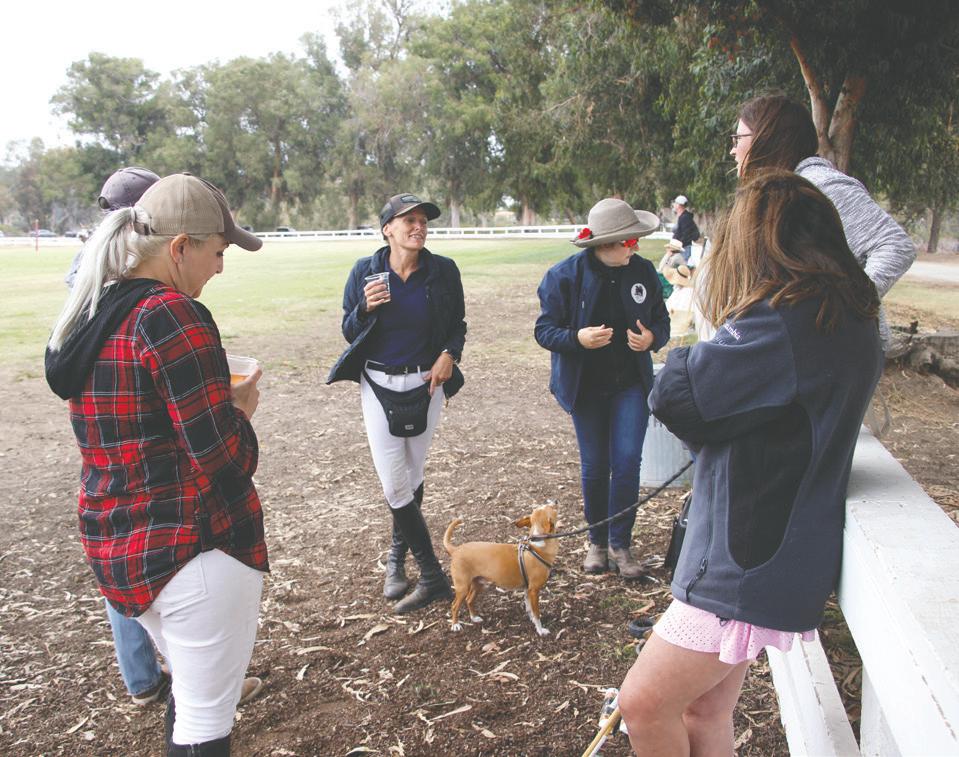

Ernie Ezcurra swaps horses during the Will Rogers Memorial Tournament Championship Match. Professional players will sometimes swap horses in the middle of one chukker rather than between chukkers to conserve their energy. Tournaments typically consist of four chukkers and each chukker is seven-anda-half minutes.

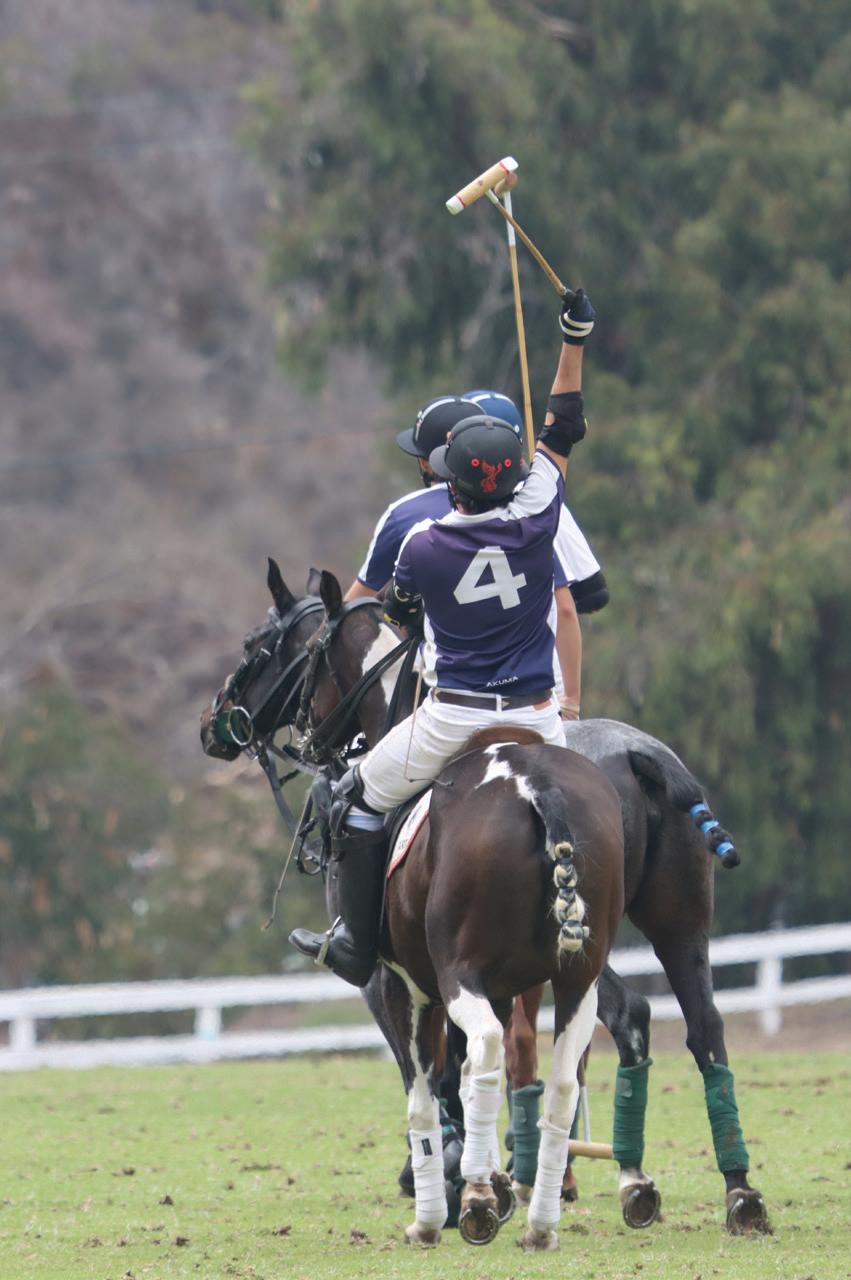


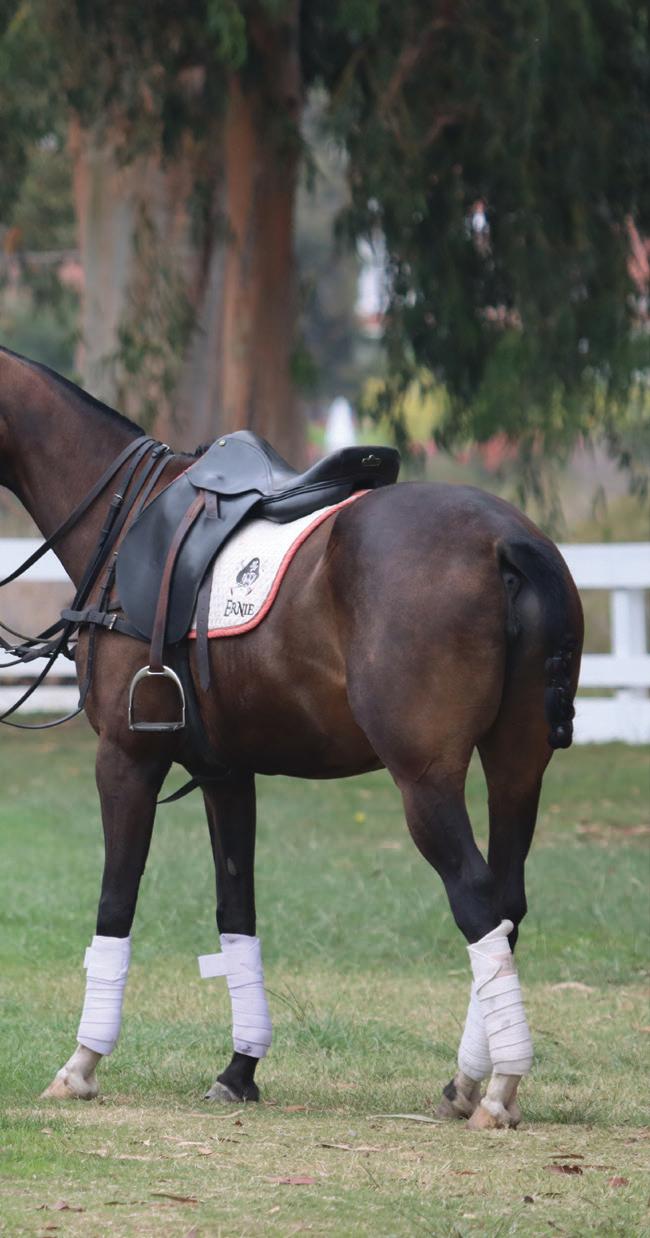 Ernie Ezcurra is greeted by his puppy Enzo after winning the Will Rogers Memorial Tournament Championship Match with his team and being presented with the trophy. The HYT Polo team has competed in this tournament for the past six years and has won it four times. The HYT Polo team won the tournament 6 - 5 1/2.
Ernie Ezcurra (left), of HYT Polo, rides across the field after the ball ahead of the rest of the riders.
Ernie Ezcurra is greeted by his puppy Enzo after winning the Will Rogers Memorial Tournament Championship Match with his team and being presented with the trophy. The HYT Polo team has competed in this tournament for the past six years and has won it four times. The HYT Polo team won the tournament 6 - 5 1/2.
Ernie Ezcurra (left), of HYT Polo, rides across the field after the ball ahead of the rest of the riders.
WhenSantiago Cisneros was 4 years old living in San Jose, Calif., his father was arrested for selling drugs, leaving him, four siblings and a mother with no support.
The family rented a room in a house where he said there was chaos, and he saw things a child shouldn’t be seeing.
It was then, as an escape, he started binge watching 1990s actions movies with Jean Claude Van Damme, Arnold Schwarzenegger and Sylvester Stallone.
“I started to participate in sports and felt good, but I still wasn’t happy with my life,” he said. “I wanted to chase my dreams, I wanted to be a fighter like Rocky and just train.”
Those strong, heroic stars inspired him to mirror their athleticism— and to share that drive for physical prowess with others. Cisneros became a personal trainer at the YMCA.
His move toward a business started with the name BFitt because he wants people to learn adopt a healthy routine.
“I’m proud of my brand because it’s more than just fitness. It’s a lifestyle,” he said.
His move toward a business started with free fitness classes at the beach so he could meet people and serve his community.
“I was constantly being asked if I would train them one-on-one, but I would refuse because I did uber and I needed the money,” he said. “One day I was fed up with Uber and quit and decided to go back into personal training. Then COVID-19 hit us and shocked the world.”
The gyms closed and people wanted a healthy distraction, so Cisneros and his wife, Lizbeth Reyes, offered free online classes. When COVID restrictions loosened, his business began taking shape.
Photographer Sean Simmons started with Cisneros’ free classes and then hired him for personal training.
“As a photographer, I like how Santiago builds and cares about the community. He is a great teacher,”
Simmons said.
Tiffany La is a personal trainer at Self-Made Training. When she saw his work with boxing, she wanted to learn
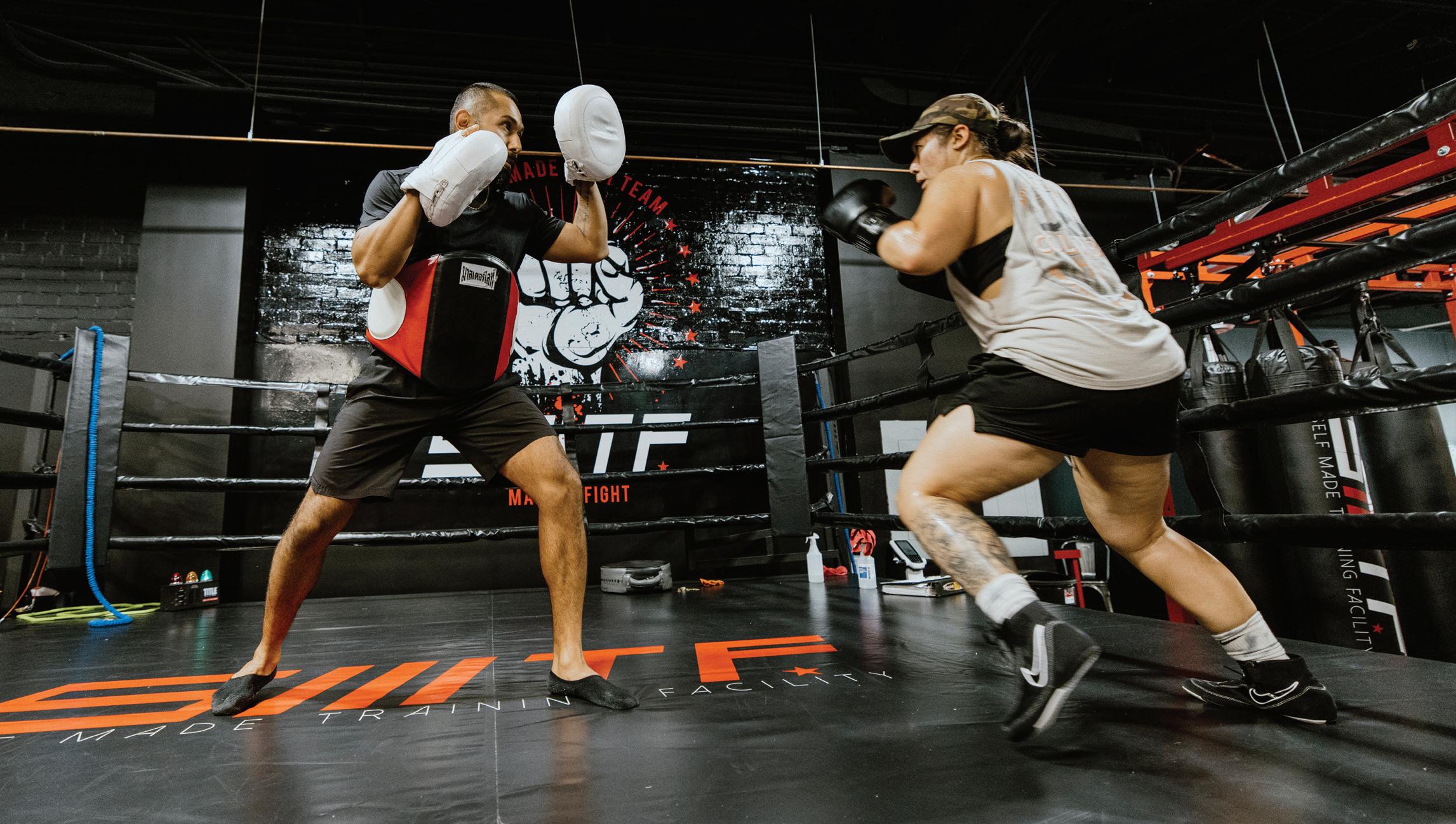
“Santiago and I work together, and I see the way he trains his clients so I thought maybe get into a boxing session with him.”
Cisneros hopes to one day open a community center where people can work out and find resources. A place where someone can learn to be fit and how to live.
“I want to help people reach their dreams and make the world a better place, ” Cisneros said.
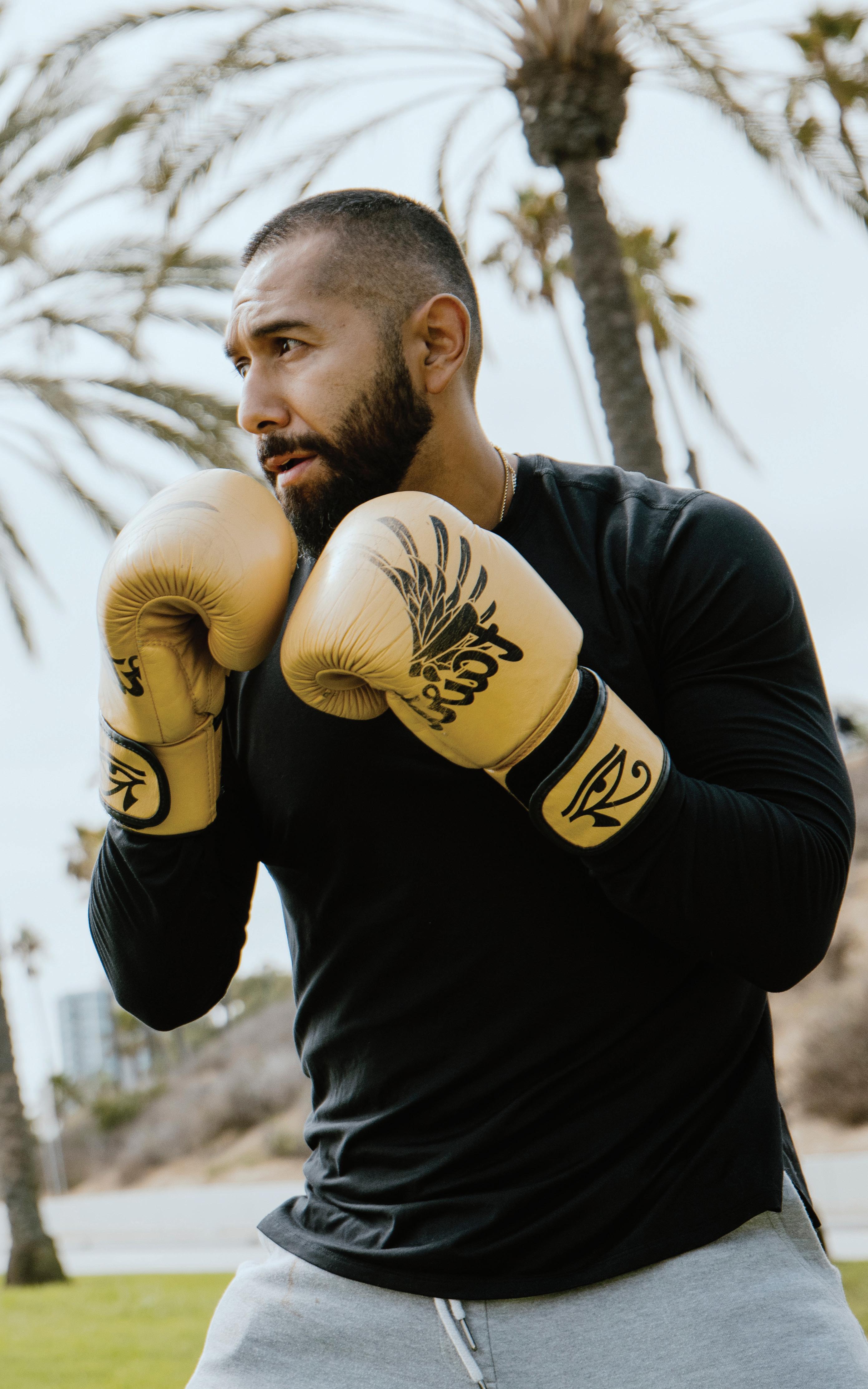


Feb. 4, 2019. With little to no warning, announcement, leaks or a single piece of promotional material , Respawn Entertainment–known previously for their sleeper hit Titanfall Franchise in the early 2010’s—released a new battle-royale game to the public: Apex Legends.
For 18 year-old Jacob Poudrier, Apex Legends is the one game he holds near and dear in his heart.
Poudrier is a Florida-native, and he attends Fullsail University as a full-time student. But in his sparetime, he streams to Twitch, and he has nearly half a thousand followers on the streaming platform.
He was a legend ranked, semipro player of Hearthstone— a card game developed and published by Blizzard Entertainment—in his early teens, and was close to reaching the Masters Tour multiple times in his career.
“I hadn’t really started competing in Apex until way after I stopped with Hearthstone,” Poudrier said. “So, really, it was kind of just
a moment of introspection where I thought, what are the pros and cons of each game and is it really worth sticking to Hearthstone.
There’s too much luck involved. So I just decided that Apex had a way bigger audience, bigger esports scene, and it won’t cost me hundreds of dollars just to keep buying cards. Plus, overall, the game is really fun to keep playing through.”
Poudrier’s interest in Hearthstone faded and Apex Legends was quick to fill that void. He has been improving his craft with the game ever since.
“I was around 15, maybe 16 when I got into esports,” he said, reminiscing on his early days. “So I guess before esports, I was kind of, well, just a kid, you know? And esports was a big part of my transition into being an adult.”
His first few years of trying to break into the esports scene was spent with Rozenoir Esports, a fairly small organization based out of Indiana, and with smaller teams within
League of Legends and Super Smash Bros.
In 2019, less than a week after release, Apex Legends had shattered expectations, with more than 25 million players in a shorter span than its biggest competitor, Fortnite. Apex Legends became a household name. Apex Legends is the unofficial sequel to Titanfall 2 and has pulled many elements from its spiritual predecessor, including weapons, tactical abilities and incredibly extensive in-game lore. Apex Legends is the unofficial sequel to Titanfall 2 and has pulled many elements from its spiritual predecessor, including weapons, tactical abilities and incredibly extensive ingame lore.
Poudrier took to Apex Legends quickly, and amassed a dedicated following on Twitch after deciding to stream the battle-royale: in this mode of gaming, one is placed in either a team or alone, and is usually pitted against a lobby of up to 60 players.
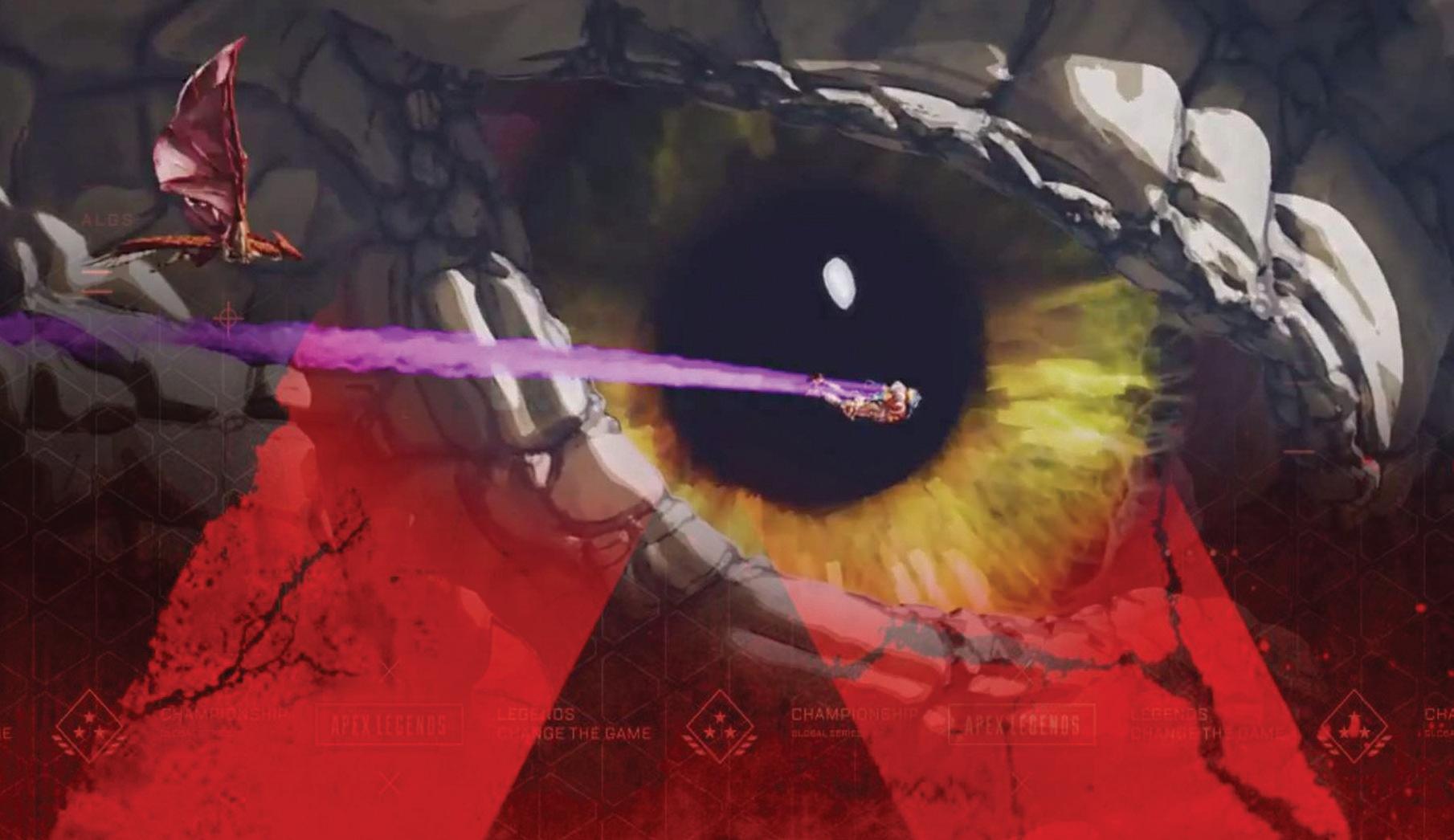
While he has switched to a more variety oriented style on the platform, he’s made a name for himself with his sharp in-game skills and personality. Most know him for his trademark beard—one he’s kept since his junior year of high school.
As the player base increased drastically, so did the popularity surrounding the game, and talk of bringing Apex Legends into the esports scene quickly followed suit.
By 2019, EA had officially announced the beginning of the Apex Legends Global Series—a competitive esports series featuring only the best of teams internationally. In the ALGS, points are accumulated by kills and assists, as well as a team’s final placement after that match has ended.
Poudrier expressed interest in entering the ALGS series, but he believes he first needs a little more time to build his brand.
“I would really just have to find people to play with at this point,” he said. “As of now, I’m trying to join my school’s esports team, so maybe we could compete in that as a group. But, at the moment, I’m just trying to practice and see what opportunities come to me.”

John “Flankk” Hardin has played Apex Legends since Season 2 and he is a veteran of the battle royale. He’s clawed his way to the rank of Diamond— two steps below the highest title of Apex Predator— almost every season since then. He plays for the Florida-based esports organization Aquatik Esports.
Hardin believes that Apex Legends is a game that can outlast others in a saturated market. And when it comes to the ALGS, he’s hoping that Aquatik Esports breaks into the series not just to hit third place, but to potentially win first place over dozens of other North American teams.
“I seriously believe the ALGS will thrive over the next several years, maybe even the next decade,” Hardin said. “Not just because of the prize money, but the bragging rights, too. Insane.”
Hardin continues to play Apex competitively, and while his organization focuses more on their CS:GO and Call of Duty teams, he and the remainder of Aquatik’s Apex Legends players continue to participate in the competitive scene in the background.
As for new players wanting to try Apex Legends for the first time, or for someone looking to try an FPS game for the first time, Hardin had some advice.
“First things first, learn how to aim,” he said. “Knowing the meta for the right legends and the weapon meta is key, and ring rotations are a vital aspect. Remember to actively practice good call outs. Good players always use communication.”
Another Apex player is Tristan “At0m” Webb, who has participated in a few tournaments Webb, like Hardin, is Diamond-ranked in Apex Legends, and he was a Hearthstone player like Poudrier, and was pushed to the first-person-shooter game due to the card game’s pay-to-win system.
“I’ve been playing since the game first released. It has changed a lot,” Webb said. Some changes for the better, some changes for the worst.”
Hardin continues to play Apex competitively, and while his organization focuses more on their CS:GO and Call of Duty teams, he and the remainder of Aquatik’s Apex Legends players continue to participate in the competitive scene in the background.
As for new players wanting to try Apex Legends for the first time, or for someone looking to try an FPS game for the first time, Hardin had some advice.
“First things first, learn how to aim,” he said. “Knowing the meta for the right legends and the weapon meta is key, and ring rotations are a vital aspect. Remember to actively practice good call outs. Good players always use communication.”
Another Apex player is Tristan “At0m” Webb, who has participated in a few tournaments Webb, like Hardin, is Diamond-ranked in Apex Legends, and he was a Hearthstone player like Poudrier, and was pushed to the first-person-shooter game due to the card game’s pay-to-win system.
“I’ve been playing since the game first released. It has changed a lot,” Webb said. Some changes for the better, some changes for the worst.”
Poudrier’s Twitch channel, where he streams to an average of 20-30 viewers a day when online in Sept. 2, 2021. Photo by Dalaanii Cochrane.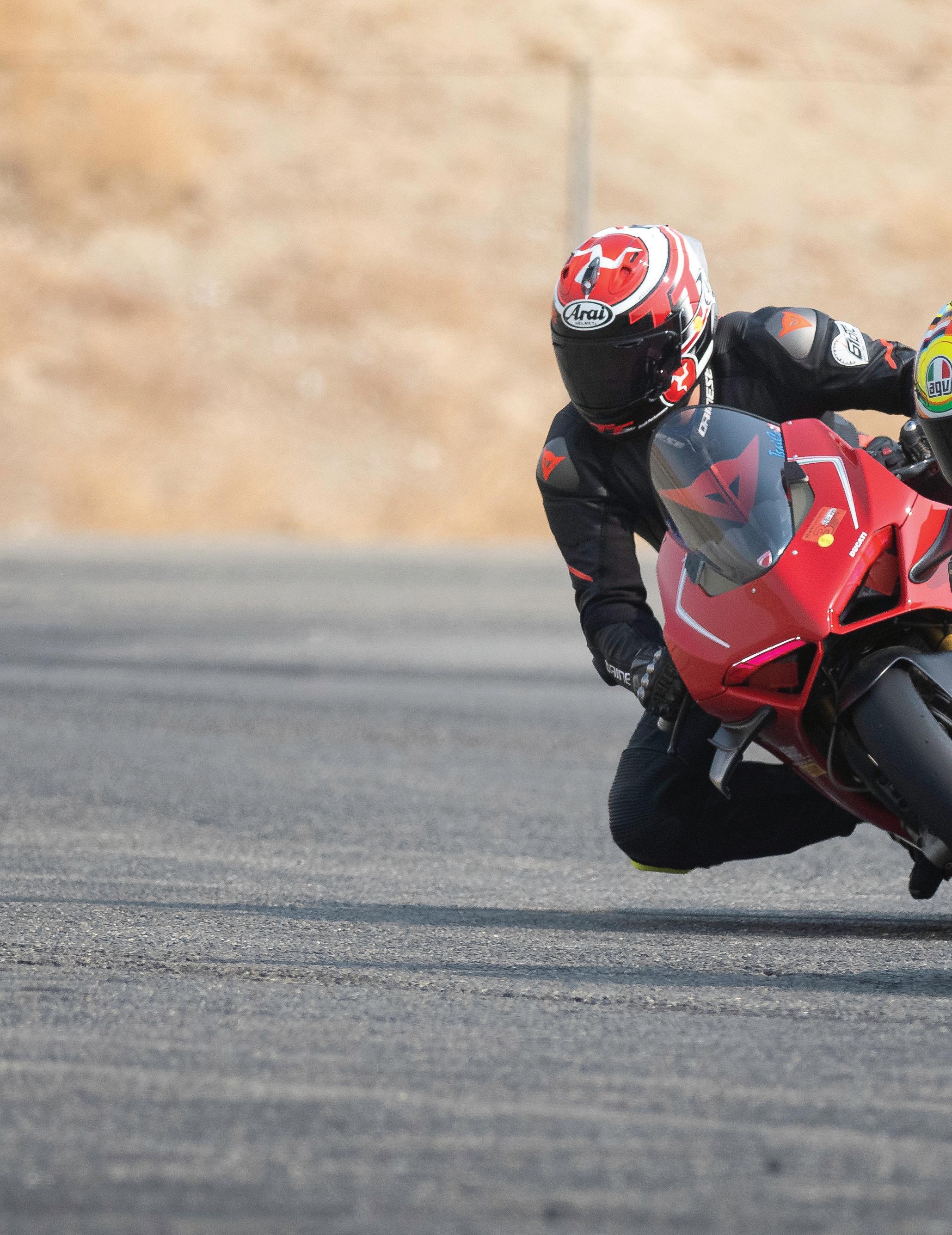 Story and photos by Bala Subramaniyan
Story and photos by Bala Subramaniyan
Rich Hua never thought of motorcycle racing before his early 40s.
A private arm security who provided 24/7 support for a private family and transport jewelries between their stores and a military contract worker, providing advanced life support ambulances for US army.
But that changed a decade ago, the day Hua rolled onto a race track.
“Before November 2012, I was in a completely different industry, completely different mindset, completely different life,” Hua said. “I didn’t even own a motorcycle before then.”
A couple of months later Hua participated in the first motorcycle race, which a veteran of the sport said is highly unusual.
“Typically, a racer will begin quite young, and it’s almost always due to being introduced by their parents, and then they come up through the ranks as a youth racer,” Dylan Code, a California SuperBike School, project manager said. “And then eventually make it to pro.”
In the first year of racing, Hua competed at the novice level, but he was first place in the standings, so his trainer and mentor told him to move to the expert level in the middle of the season.
Greg Nulman, who owns Motoyard Tracks Days, a company that trains racers, told Hua that to be a good racer he can’t be the guy everybody chases. He has to chase guys faster than him, so he could learn from them.
At the end of that racing year, Hua completed the season in third place in both novice and expert levels, even though his points for novice level didn’t count for his expert standings. This had never been done.
Hua learned more about motorcycles and repairing them. Without prior experience, he was able to gain knowledge on repairs to fix his motorcycles. His knowledge of the motorcycle made him start King’s Garage in September 2013.
But his passion for racing continues.
“Sometimes in a race, you compete with yourself more than you compete with other competitors,” Hua said.
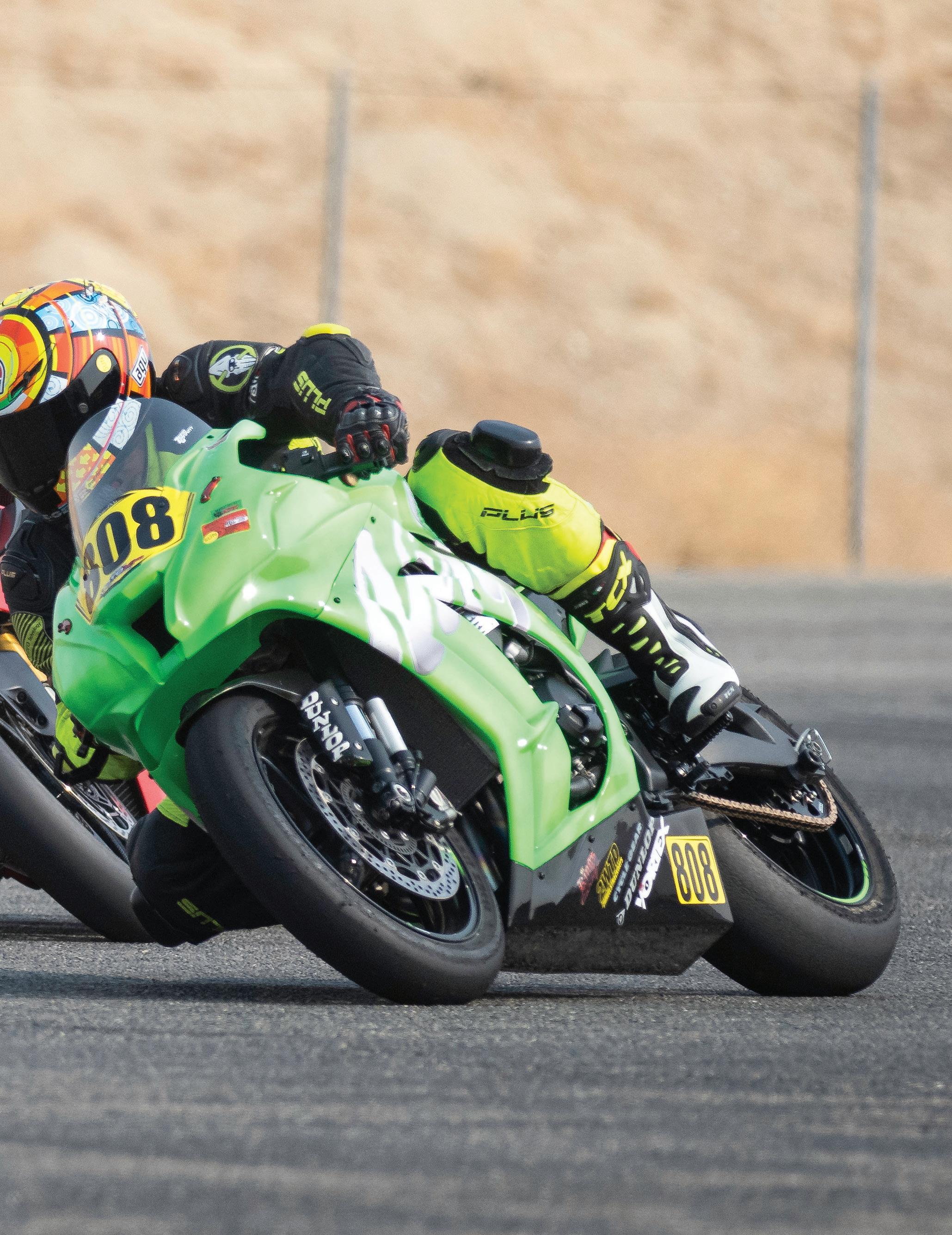

To make a small fortune in motorcycle racing, start with a big fortune.


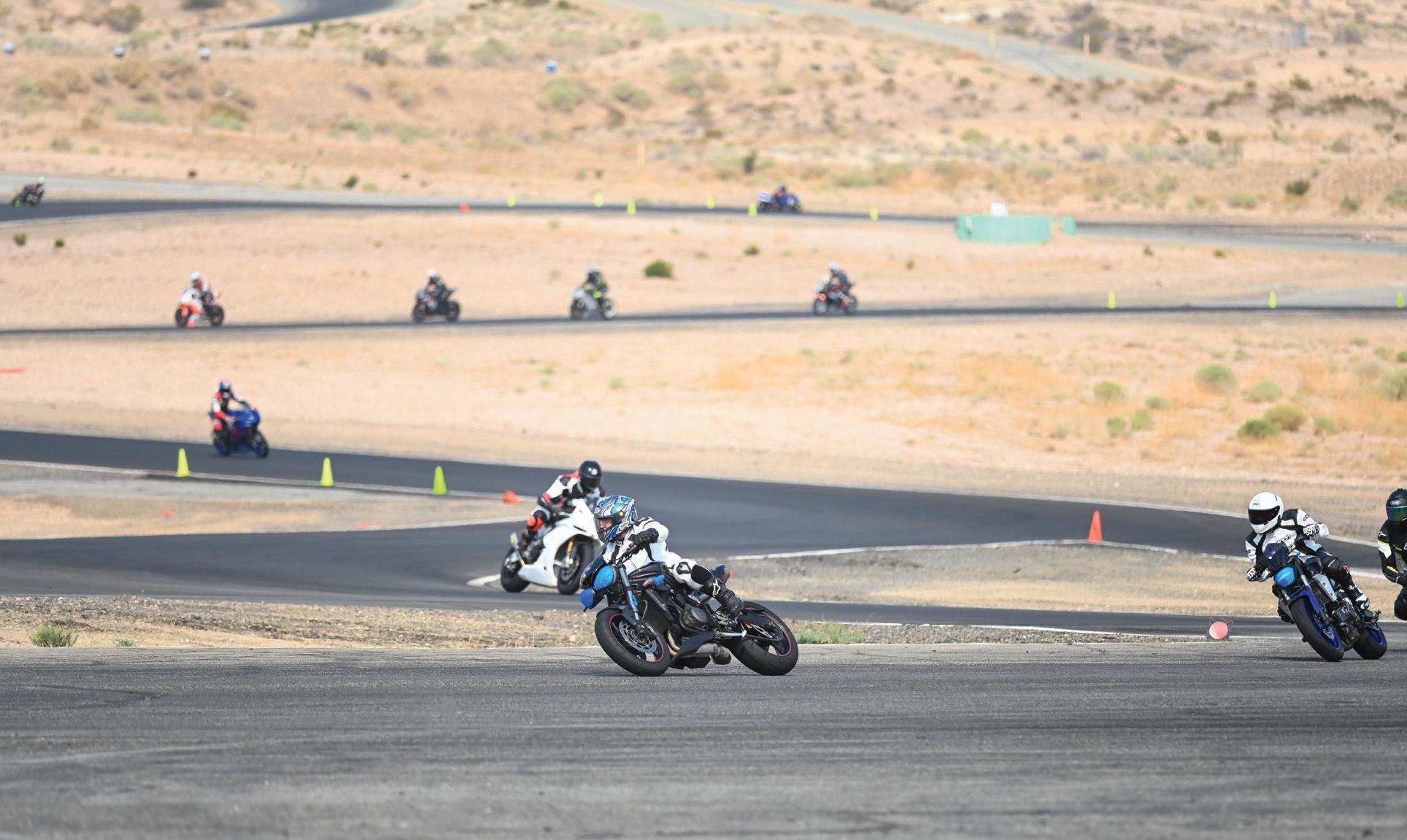
It started with simple warm-ups; small jumps to clear, vaults off a tree and safety landings from one ledge to another. It soon escalated into climbing onto a temporary walkway through construction and then over a guardrail at the California State University, Northridge Library balcony.
Six people had managed the challenge. But what goes up must come down. A man with long hair in a ponytail and a sharp beard took a moment to mentally prepare as the rest stood by waiting. The group held a collective breath as they watched Joseph Unruh, a coorganizer of Los Angeles Parkour’s Saturday Jams, vault over the
guardrail onto the walkway six feet below. The cracking sound from Unruh’s feet hitting the plywood was soon followed by cheers and applause.
The University Library Lawn had been taken over by about 30 traceurs— people who perform parkour and free-running activities—jumping from rooftops, vaulting over any obstacles they find and flipping over each other for one Saturday afternoon.
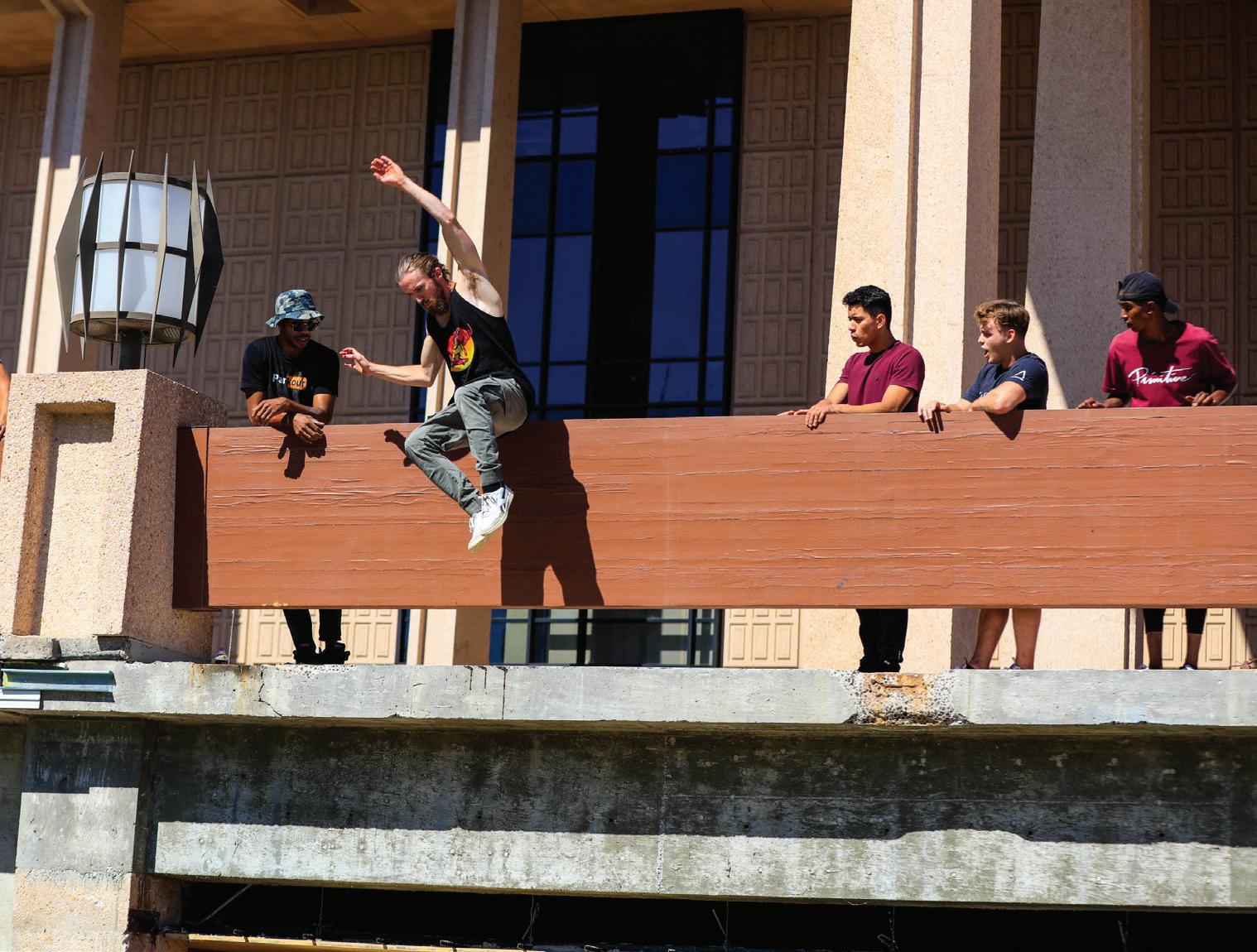
“Parkour is taking what we all did as kids and turning it into a discipline,” Unruh said.
Los Angeles Parkour’s Saturday Jam participants ranged from newcomers trying to learn a new sport to pro-tricking athletes and ex-Ninja Warriors. Unruh said that it’s a good mental environment for someone at any skill level.
“You’ll have people like Bailey [Payne] that come and do crazy flips,” Unruh said. “Then you have other people that are more beginners. It’s just a great way for those skill levels to kind of mix in and grow off each other.”
What began as a way for Unruh and Jacob Cormier to continue parkour training during the COVID-19 pandemic has become a weekly Saturday Jam that continues even as the indoor gyms reopen.
“They needed something like this to see each other regularly,” Cormier said.
Unruh and Cormier were training at UCLA one weekend when they ran into other athletes doing the same thing. They realized that with more participants, the training sessions cultivated greater uplifting feelings and decided to keep that momentum going.
“Our group of five people turned into 30 people that all just happened to be there training,” Unruh said. “We said, ‘Dude, this is so awesome, why don’t we do this every week?’”
Cormier said that they are mindful of the places they host the Jam, choosing spots that are in open air with enough space for participants to follow CDC guidelines while also presenting a challenge.
“We’re going to go to spots where we know we’re not going to get kicked out,” Cormier said. “Because what we learned was the important part is just
to have people together.”
Cormier said that like most things, parkour is something that traceurs should practice frequently with other people.
“You have to make time to train together regularly or it doesn’t matter how cool your content is,” Cormier said. “You have to just spend time with each other.”
Cormier hopes to one day build parkour parks across Southern California to help trainers start a business without the need for a facility.
“My mission is to kind of change the paradigm of how coaching works within the sport,” Cormier said. “At the present moment, a lot of [coaches] have to rely on gyms.”
The Saturday Jams attract many different traceurs of different skill levels. Australian singer Ky Baldwin said he enjoyed his first time attending.
“I’m able to try new things and be in a different landscape,” Baldwin said. “There’s so many different people here that I can learn from and try new things.”
Unruh said that performing parkour is more of a mental challenge rather than a physical one, and Los Angeles Parkour Saturday Jams helps traceurs occupy a positive mental space.
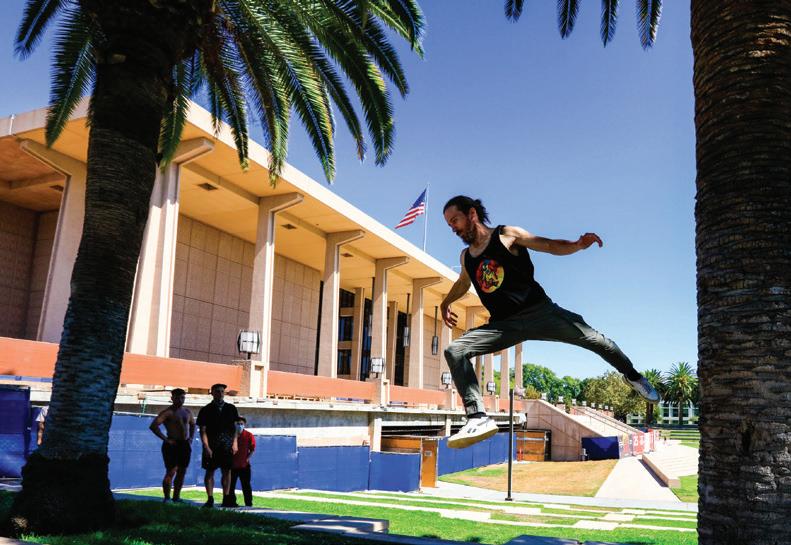
“The passion comes when you unlock new challenges,” Unruh said. “You push your limits and just get to hang out with a bunch of awesome people that are in the same mindset.”

“
Parkour is taking what we all did as kids and turning it into a discipline.
Joseph Unruh Co-founderJoseph Unruh leaps off of a palm tree at the CSUN Library in Northridge, Calif., on Oct. 9, 2021.

Wisps of white soared through the air against the indigo setting as ping pong balls crashed against the charcoal and vermillion-colored paddles. Beads of sweat covered the foreheads of players as they leapt back and forth to cover the span of the tennis table, making sure every ball got over the net.
Most people view pingpong—called table tennis by competitive players—as a leisure activity played at barbeques or college dorms, but athletes and coaches at local table tennis club Allen & Sons take the sport much more seriously.
Club owner Fovad Kaseb has dedicated his life to understanding and perfecting the nuances of table tennis.
“I began playing table tennis at a young age at a club in my town similar to the one I own now, which provided a healthy place for young players to learn, practice and compete in table tennis,” Kaseb said. “I fell in love with the sport and still love it immensely to this day. I am very grateful that I can provide a similar opportunity to young players in Los Angeles and help them along the way.”
Kaseb’s passion for ping pong started in his hometown of Sanandaj, Iran. He won several championships in singles and doubles competitions in Iran and West Asia. He competed in several world championships.
Kaseb spent a decade coaching the Iranian table tennis team as they placed in several international championships in Asia and the Athens Olympics.
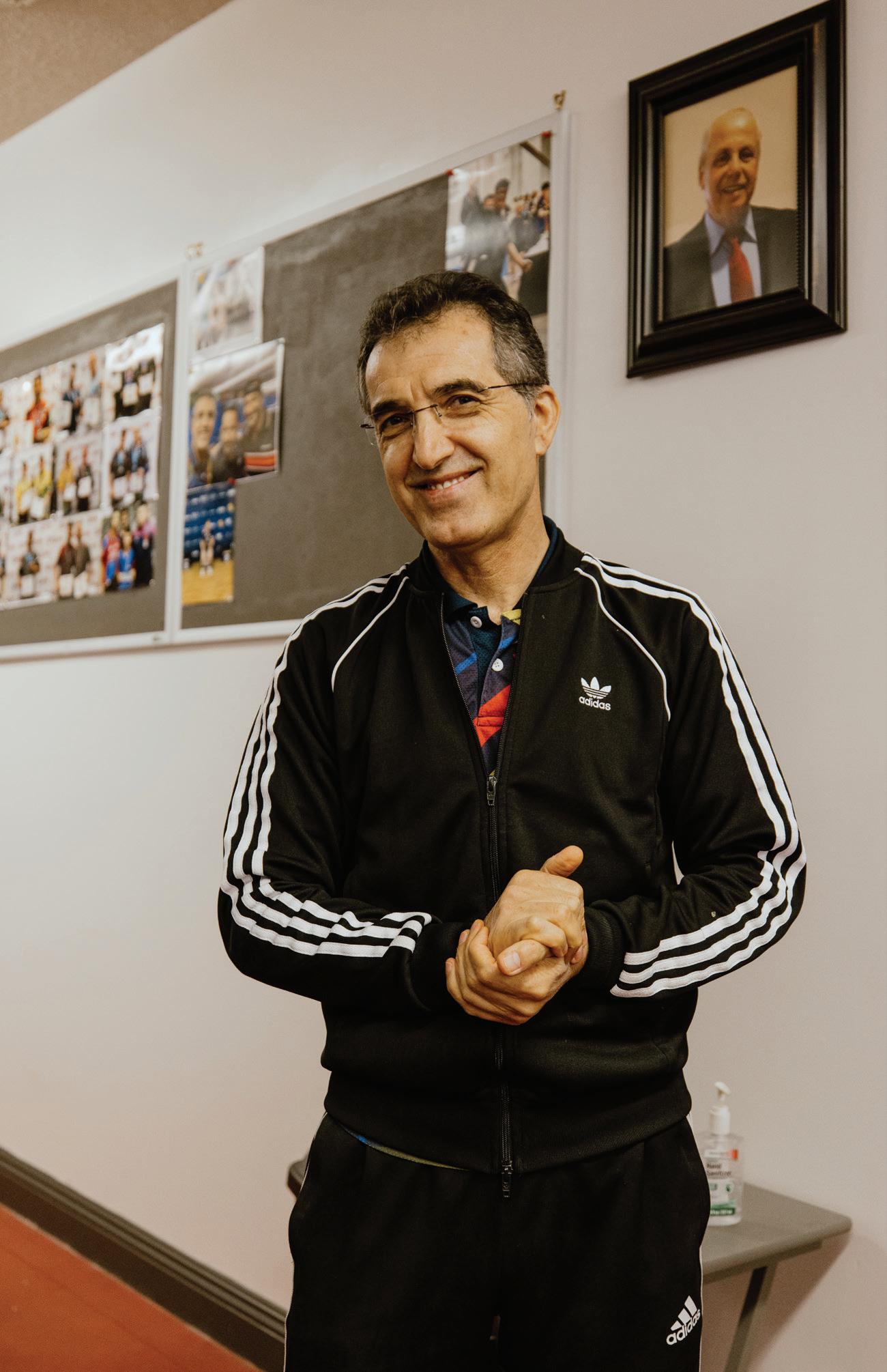
He earned a master’s degree in physical education and received two high-performance coaching certificates from the International Table Tennis Federation and holds a national coaching certificate in the United States.
continue to bring table tennis lovers together,” Kaseb said. “At the time, I was one of the coaches teaching at the club and I also did not wish to see the club close down, so I decided to buy the business from Allen.”
Since 2019, Kaseb has offered a community for people ages 4 to 85, ranging from beginner to expert to come to learn the complexities of pingpong.
After moving to Los Angeles, Kaseb started coaching table tennis at Allen & Sons located in Canoga Park.
In 2019, Kaseb bought the business after original owner Allen Verny died.
“Unfortunately, Allen became very ill in 2017 and was no longer able to manage the club, but he loved the sport and wanted to see the club
Pingpong player Jordan Jones started playing as a freshman in college as a way to socialize with schoolmates. Four years later, Jones was trying to tackle the skills and techniques for table tennis. Jones appreciates the group lessons Allen & Sons offers. “I’m not ashamed to say that I’ve lost to almost everybody here,” Jones said. It’s not a big deal because you have to lose to figure out what you’re bad at and figure out what you need to work on. So, I’ll take mental notes from what gave me the most trouble in the game, and then I’ll go over to a coach and say, ‘Hey, can we work on this,’ and they’re like, ‘Yeah, of course, sir,’ and they’ll set me up perfectly to work on my weaknesses.”
Another athlete interested in the intricacies of table tennis, Alex Machacek, has been practicing at Allen & Sons for about three years and said the coaching has greatly improved his game.
“You can remember the information that finally goes from your brain into your body that you executed correctly,” he said. “And then, if you hit that shot the way you’re supposed to, that’s a beautiful feeling.”
Table tennis expert
Graham Frankel, the author of two pingpong novels, explained the social roots of the activity.
“It started as a social game and developed into a sport in the early part of the 20th century,” Frankel said. “In the Victorian times, they played in long dresses and suits. It was a kind of an after-dinner activity, but it transformed quite rapidly in the early parts of the 20th century.”
Frankel said many people start practicing table tennis because it’s easy to approach as it has low risks of injury and people can bond with their opposition during practice.
“It’s more accessible to people with various disabilities and older people. We’ve had players play successfully even in their 90s,” Frankel said.
Though Kaseb’s business had struggled during the pandemic, athletes, including Ami Schiller, found their passion for ping pong again and used it as a means to get in shape.
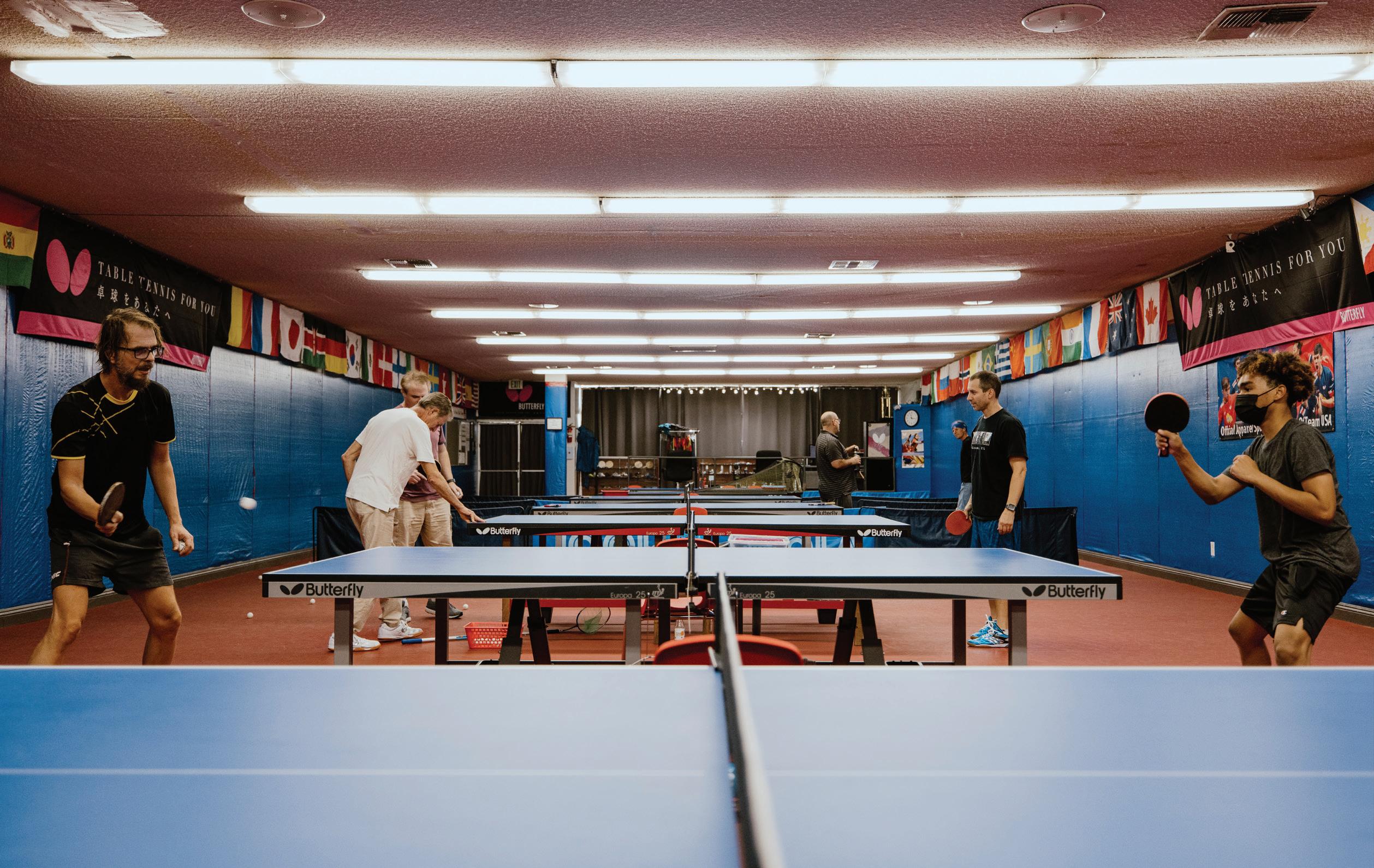
Though Schiller practiced table tennis in high school, he was able to perfect his practice with the help of Kaseb at Allen & Sons.
“Yeah, he’s got a good smile, he’s very friendly” Schiller said. “He’s definitely a good coach, he gives good tips, and it’s a pleasure to come here.”
Schiller said that hanks to Kaseb and other coaches at Allen & Sons, Schiller improved his form
and had more fun playing with his newly acquired techniques. Kaseb is happy to see athletes slowly return to the ping pong tables as the pandemic dies down. “I received a great deal of encouragement and assistance from people who opened up their warm hearts to me in this country,” Kaseb said. “It’s been wonderful to teach table tennis in different parts of the world and offer a club where people can practice and learn table tennis every single day. I hope to pass along my knowledge and love of the sport to the next generation of players in Los Angeles.”
 Caroline Boone smiles at her American Saddlebred gelding, Juno, at Golden Glen Stables in Shadow Hills, Calif., on Nov. 14, 2021.
Caroline Boone smiles at her American Saddlebred gelding, Juno, at Golden Glen Stables in Shadow Hills, Calif., on Nov. 14, 2021.
y Golden Trinket patiently stands by the mounting block, softly swishing her tail in the air when flies dared to land on her golden body, as her charge Priscilla Oh prepares to get on her back for a lesson. Erin Kennedy, owner and trainer at Golden Glen Stables, assists the 6-year-old in holding the reins and then gently lifts her up in the air and into Trinket’s saddle.
This is the future of the saddle seat industry. It began as a sport in which only professionals competed, but it is now amatuer-driven and it is up to the trainers to prepare their students for the show ring.
“It is so important that some trainers do give lessons,” Kennedy said. “There are some barns that strictly do training and training clients. I like to give lessons because I want to be part of the growth within our industry.”
Saddle seat is a performance-based sport where a horse and rider perform patterns and rail work for a score. Two main divisions include equitation and performance. In equitation, the judging is focused
on the rider’s form and the overall appearance of the horse and rider together. In a performance class, judges are studying only the horse’s movement and overall performance.
The sport of saddle seat began with American Saddlebreds but has diversified over time to include other breeds, such as Arabians and Morgans.
Katie Case, a saddle seat trainer and judge based in the Saddlebred capital of the world, Shelby County in Kentucky, explained what makes the Saddlebreds natural performers.
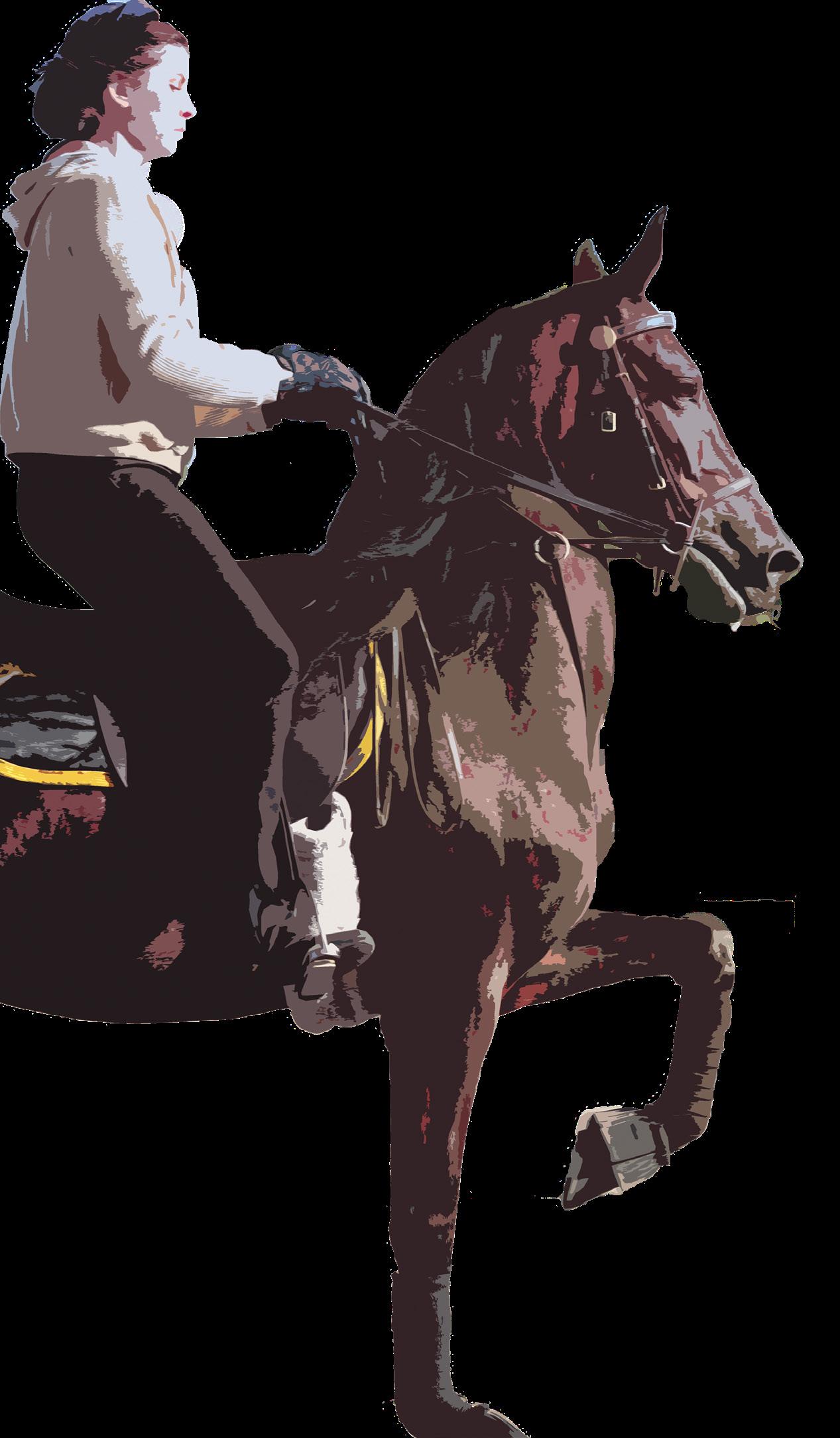
“The five gaited horse is what makes our breed in particular extremely unique.” Case said. “The reason why that’s unique is because a five gaited horse is already born knowing how to walk, trot and canter, but they have a predisposition to do the two other gaits. It’s called the slow gait and the rack. The slow gait and the rack take a ton of athletic prowess on the horses that have it.”
Kennedy recommends that people interested in the sport visit a competition.
“I think the best way for someone to understand what we do is to go watch a show because our sport is also very centered around the spectators,” Kennedy said. “The horses love it. It’s incredible to watch a horse win and they know that applause is for them and they just get big and beautiful and they just show right off. These horses are bred for this and they just love it.”
Caroline Boone, who has been riding since she was 5 and began training with Kennedy in 2019, said she has learned many life lessons through the sport.
“It’s calming, it’s
centering. It teaches you how to work through challenges in a different way,” Boone said. “It gets you to think a lot and be very aware of how you’re communicating, particularly with your horse. I also think being competitive teaches you to be gracious and have a positive attitude.”
Melissa Moore, a board member serving on the American Hackney Horse Association, said the sport is not about who scores the most goals or who races across the finish line first.
“With our discipline, we are competing collectively,” Moore said. “ It’s totally different because you are outperforming the horses that you’re showing against at that given time.”
Another performance-based sport is driving. There are many divisions of driving, but one of the more popular ones is pleasure driving, which involves a two-wheel vehicle and the horse is shown at a pleasure trot, an extended trot and a flat walk.
The unique physical aspect of driving a horse with a cart rather than riding the horse allows the sport to be accessible to a wider audience.
“You will see a lot of people get into the Hackney [driving] discipline because they may be older, and so an older individual can actually sit behind a beautiful Hackney pony and drive it and be very competitive,” Moore said. “With a few lessons, I think anybody can drive a Hackney pony. It’s hard but it’s also enticing because you can learn to do it at any age.”
Equestrian sports, including saddle seat and driving, are ones where there are new lessons to learn every day.
“Anybody that walks through the door, if you just foster the love of the horse, and you continue to try, to reach and strive every day to learn more, then you can take it to whatever level you want,” Case said.
“
These horses are bred for this and they just love it.
Erin Kennedy Owner and trainer at Golden Glen
StablesPhoto illustration of Caroline Boone rides her mare Sunny in a lesson with Erin Kennedy at Golden Glen Stables in Shadow Hills, Calif., on Oct. 21, 2021.




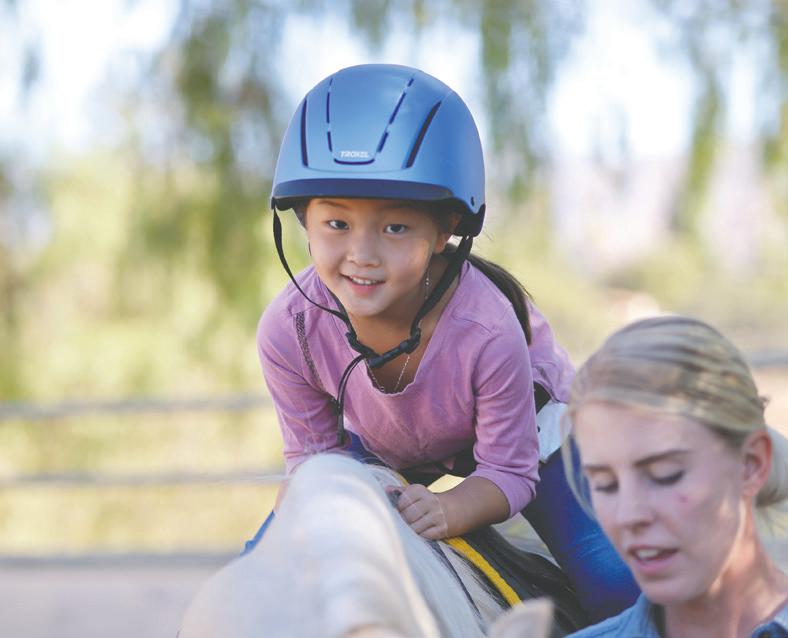 Erin Kennedy prepares her pony, Charlie, to drive at Golden Glen Stables in Shadow Hills, Calif., on Sept. 27, 2021.
Photo illustration of Tamisha Glover (left) taking a driving lesson from Erin Kennedy (right) at Golden Glen Stables in Shadow Hills, Calif., on Oct. 21, 2021.
Priscilla Oh smiles during a lesson on Trinket at Golden Glen Stables in Shadow Hills, Calif., on Oct. 10, 2021.
Erin Kennedy (right) assists Lauren Jack in getting on Buttons for a lesson at Golden Glen Stables in Shadow Hills, Calif., on Oct. 10, 2021.
Caroline Boone feeds an apple to her mare, Sunny, after a lesson at Golden Glen Stables in Shadow Hills, Calif., on Oct. 21, 2021.
Erin Kennedy prepares her pony, Charlie, to drive at Golden Glen Stables in Shadow Hills, Calif., on Sept. 27, 2021.
Photo illustration of Tamisha Glover (left) taking a driving lesson from Erin Kennedy (right) at Golden Glen Stables in Shadow Hills, Calif., on Oct. 21, 2021.
Priscilla Oh smiles during a lesson on Trinket at Golden Glen Stables in Shadow Hills, Calif., on Oct. 10, 2021.
Erin Kennedy (right) assists Lauren Jack in getting on Buttons for a lesson at Golden Glen Stables in Shadow Hills, Calif., on Oct. 10, 2021.
Caroline Boone feeds an apple to her mare, Sunny, after a lesson at Golden Glen Stables in Shadow Hills, Calif., on Oct. 21, 2021.
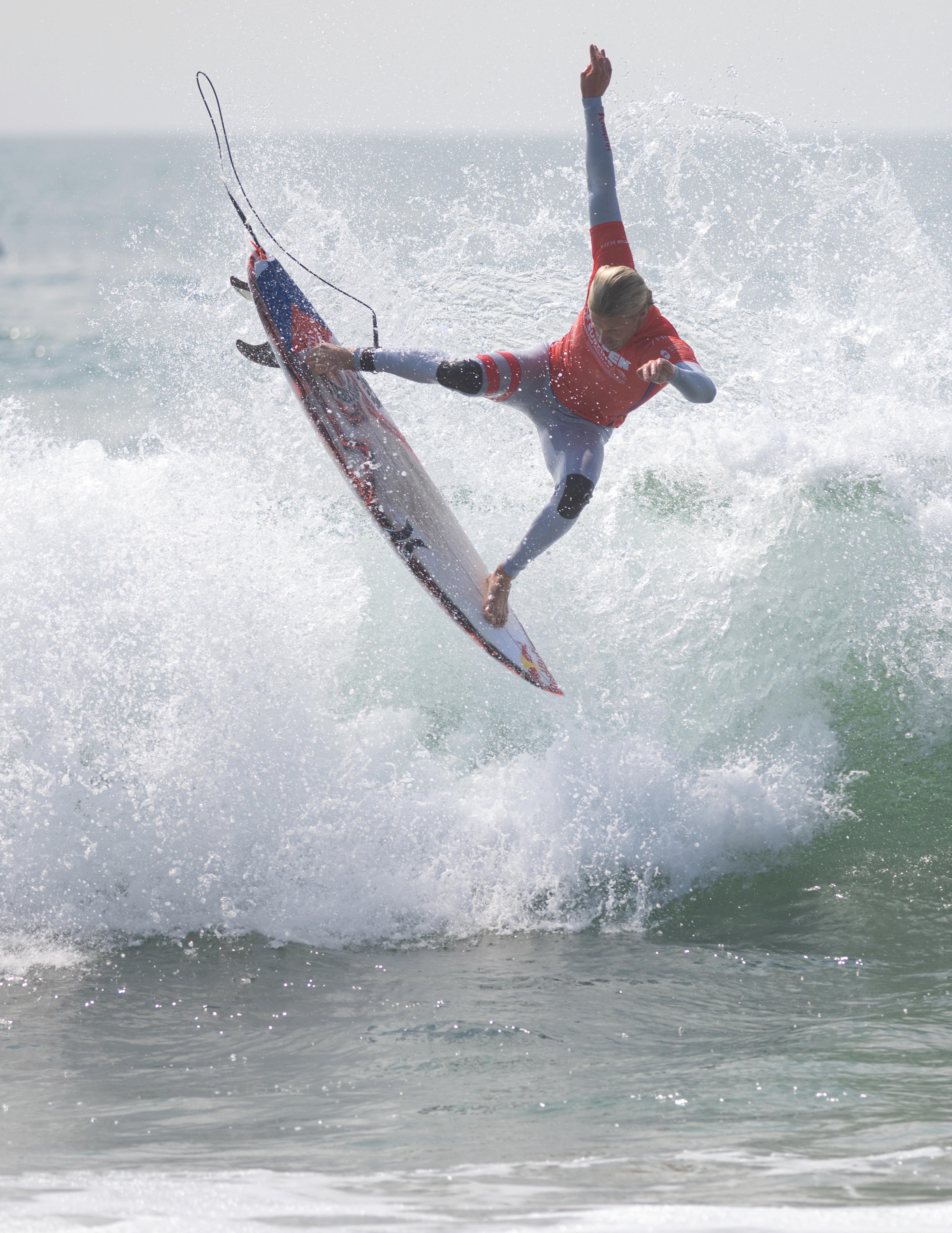


 Spectators watch the US Open of Surfing in Huntington Beach, Calif., on Sep. 26, 2021.
Griffin Colapinto, the winner of US Open 2021, walks back to shore after his heat in round of 16 at the US Open of Surfing in Huntington Beach, Calif., on Sep. 26, 2021.
Spectators watch the US Open of Surfing in Huntington Beach, Calif., on Sep. 26, 2021.
Griffin Colapinto, the winner of US Open 2021, walks back to shore after his heat in round of 16 at the US Open of Surfing in Huntington Beach, Calif., on Sep. 26, 2021.
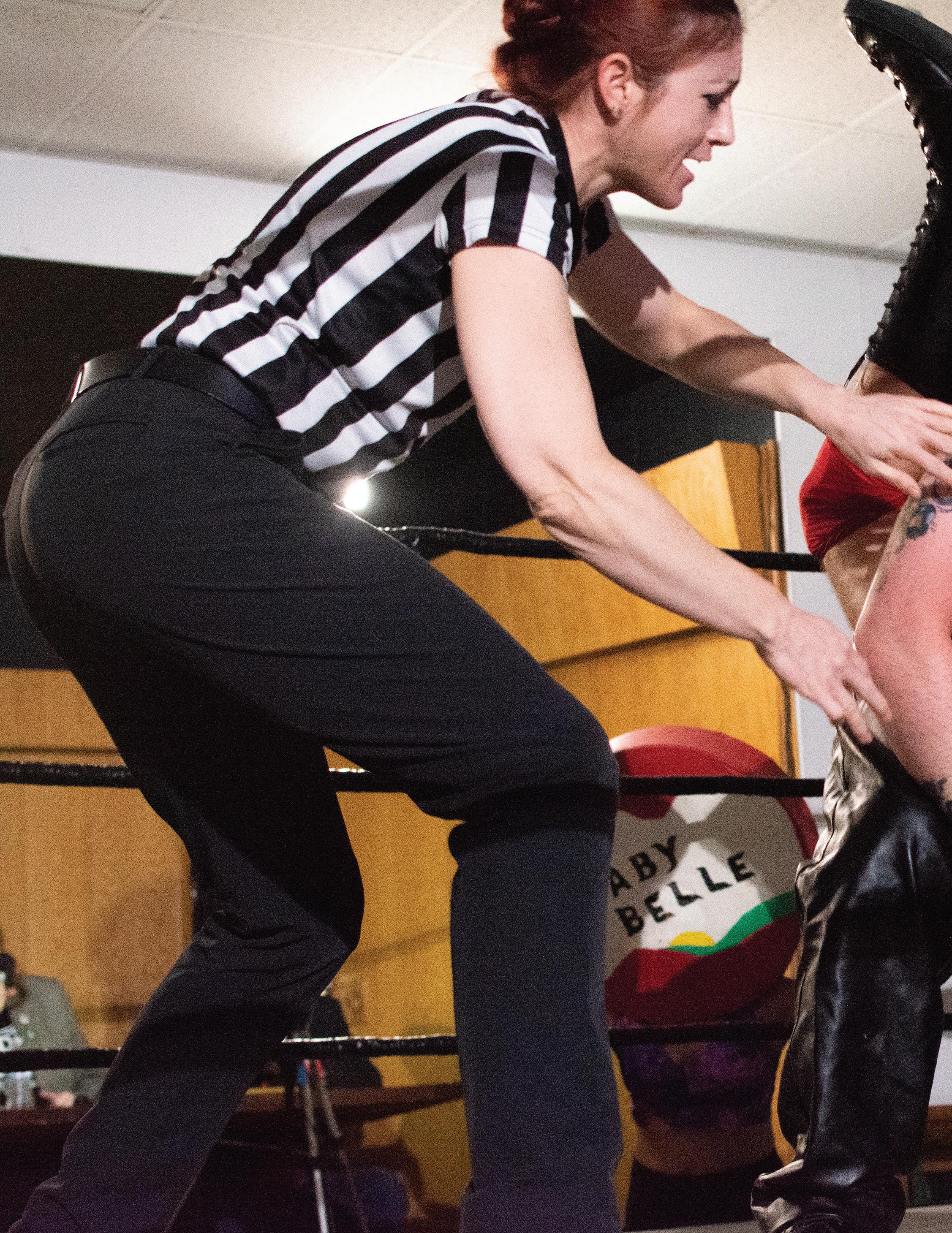

A human ricotta cheese, a box of General Tso’s chicken, a Sasquatch and goblins wrestled on the “Backsplash” card. Conjoined twins won the tag team titles, a chicken fought a mad scientist, and it was a man namedLeather Daddy’s birthday.
Oh, and several people physically assaulted a pop-tart.
If you were born anywhere from the late 1980s to the mid 2000s, odds are you at least witnessed the craze of pro-wrestling. Many of the storylines that took place were less serious and more comedic.

Wrestling Pro Wrestling is a wrestling promotion out of Burbank, Calif., that is more based on fun than anything else. “Backsplash” took place on Sept. 24, 2021, and the event had a full lineup.
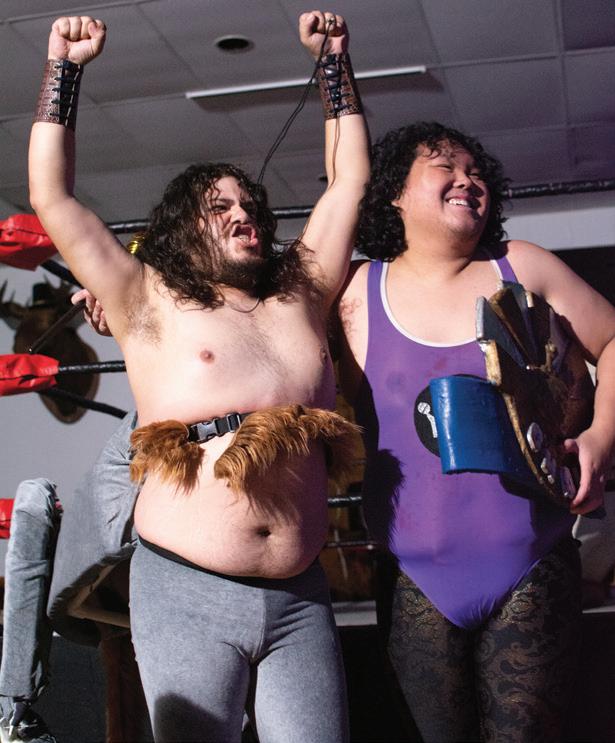
Derek Smith, who helps run the promotion, wrestles as Cereal Man. Over the course of the night, one thing was clear--there was no telling what was going to happen next.
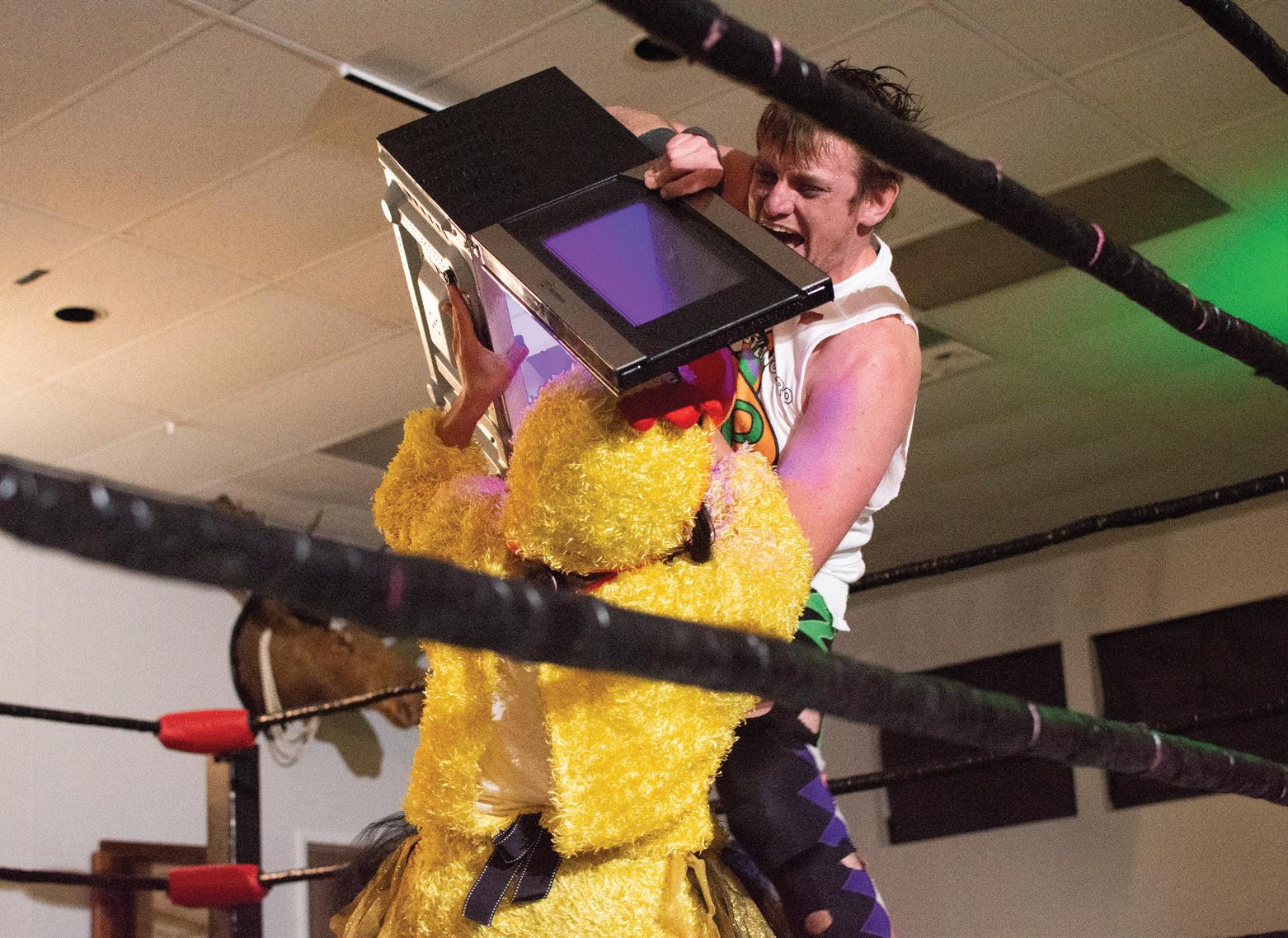


“At a certain point, it’s mind-numbing if it’s not for fun,” Smith said.
Many of the people who wrestled on the show also helped behind the scenes, building the ring, setting up chairs and selling merchandise. Darwin Finch is another wrestler on the roster, named simply Finch, who said fans most enjoy the whimsy of it all.
“When they come to the show, they get that goofiness,” Finch said. “Then they also get the athleticism. I think that’s the part that surprises people and captivates them.”
The room of about 60 people included families, couples with drinks and kids, there to watch a multitude of big personalities featured on the evening’s lineup.
Adnan Kureishy had a match that night, performing as Bob Tabasco.
“I expect the audience to basically just join us on the ride,” Kureishy said. “We appeal to a special audience and I think it’s both wrestling fans and non-wrestling fans.”
The mad scientist, Finch, sticks Chick-A-Dee’s head into a microwave during their match at WPW’s event, Backsplash, in Burbank, Calif., on Sept. 24, 2021. Sasquatch is one of the many characters you might encounter at a WPW event. King Dezi celebrates with his minotaur after retaining his championship title. Derek Smith helps with handling everything at WPW. He wrestles, sets up the ring, promotes and designs costumes.
